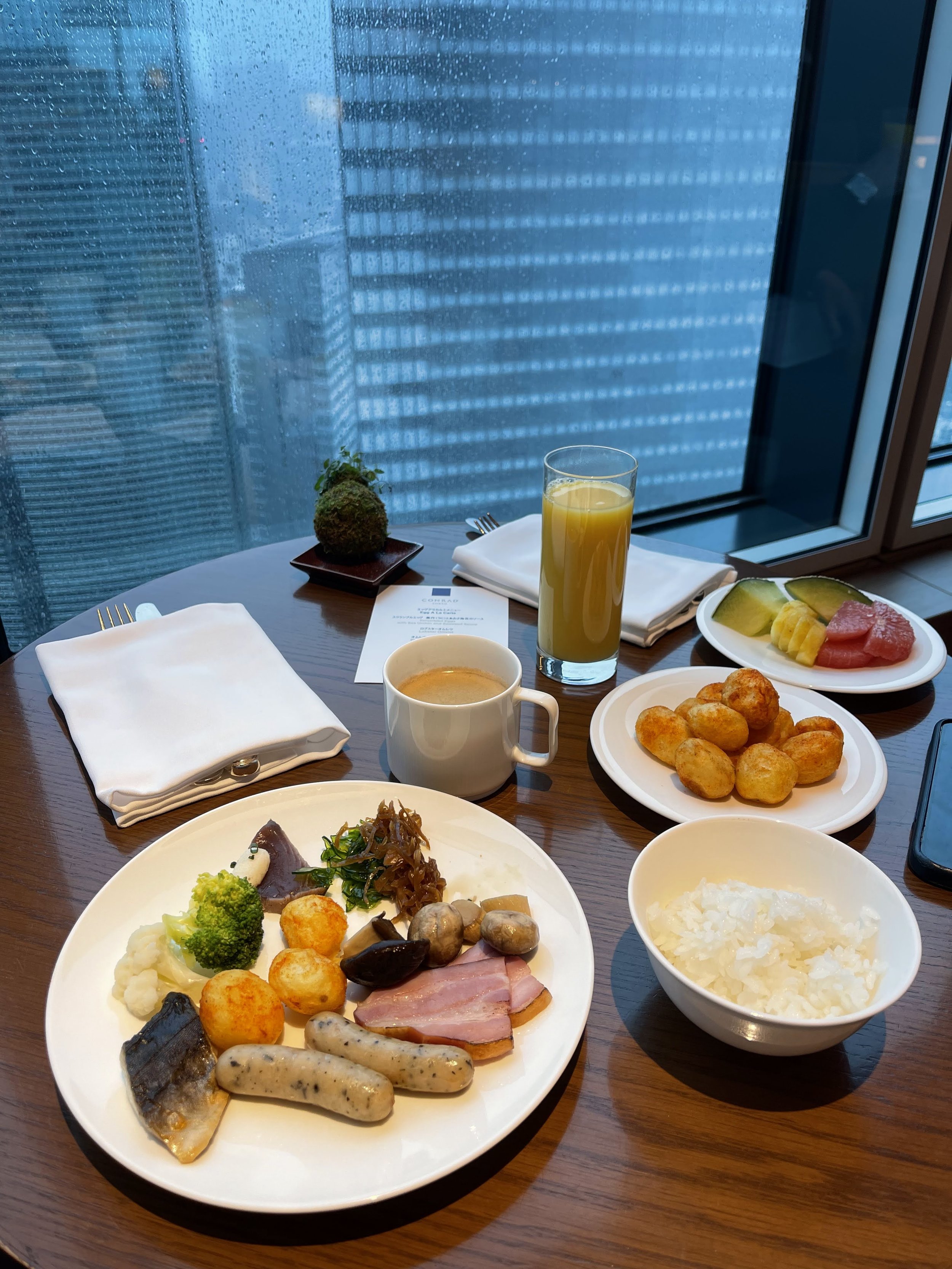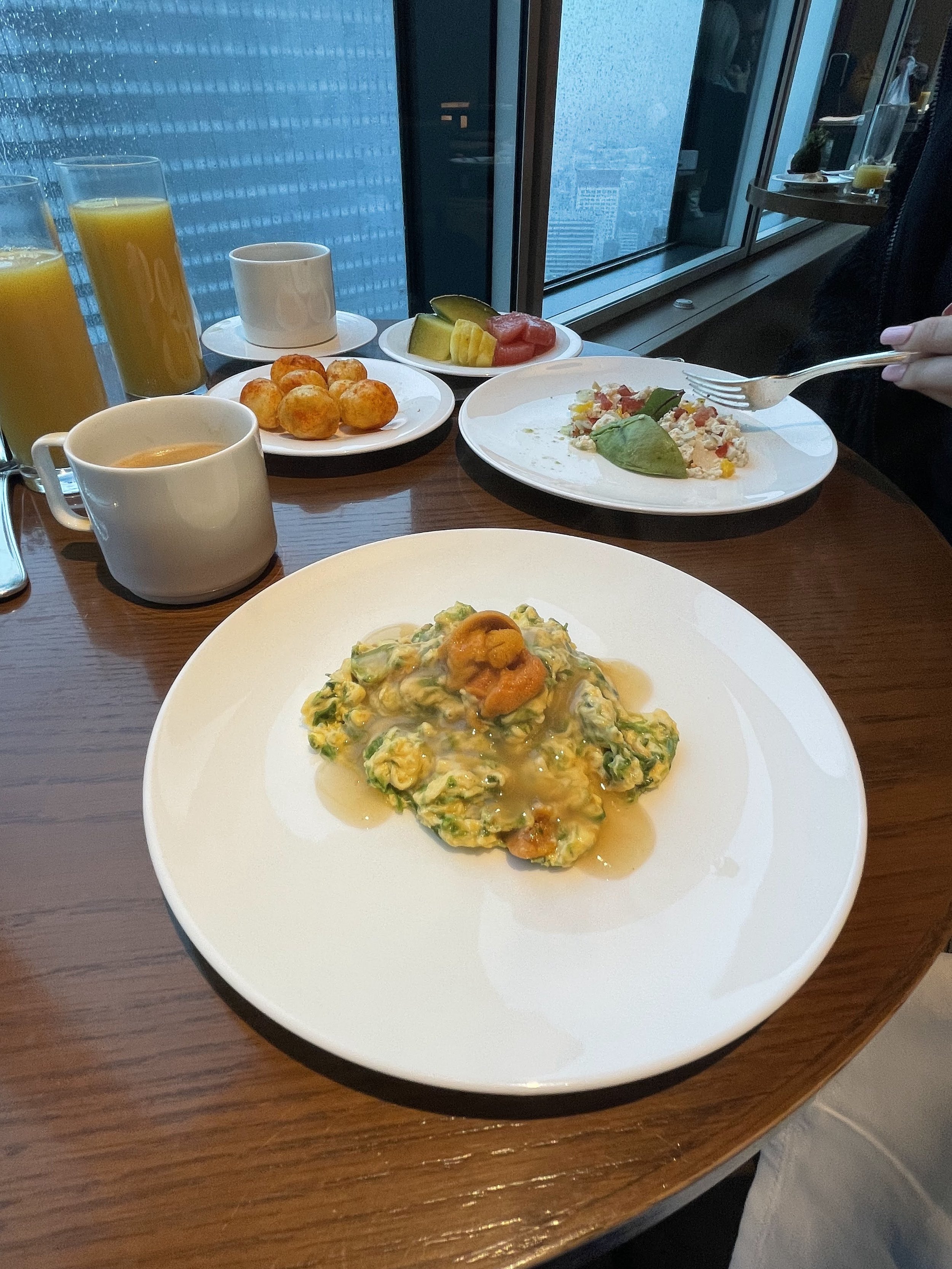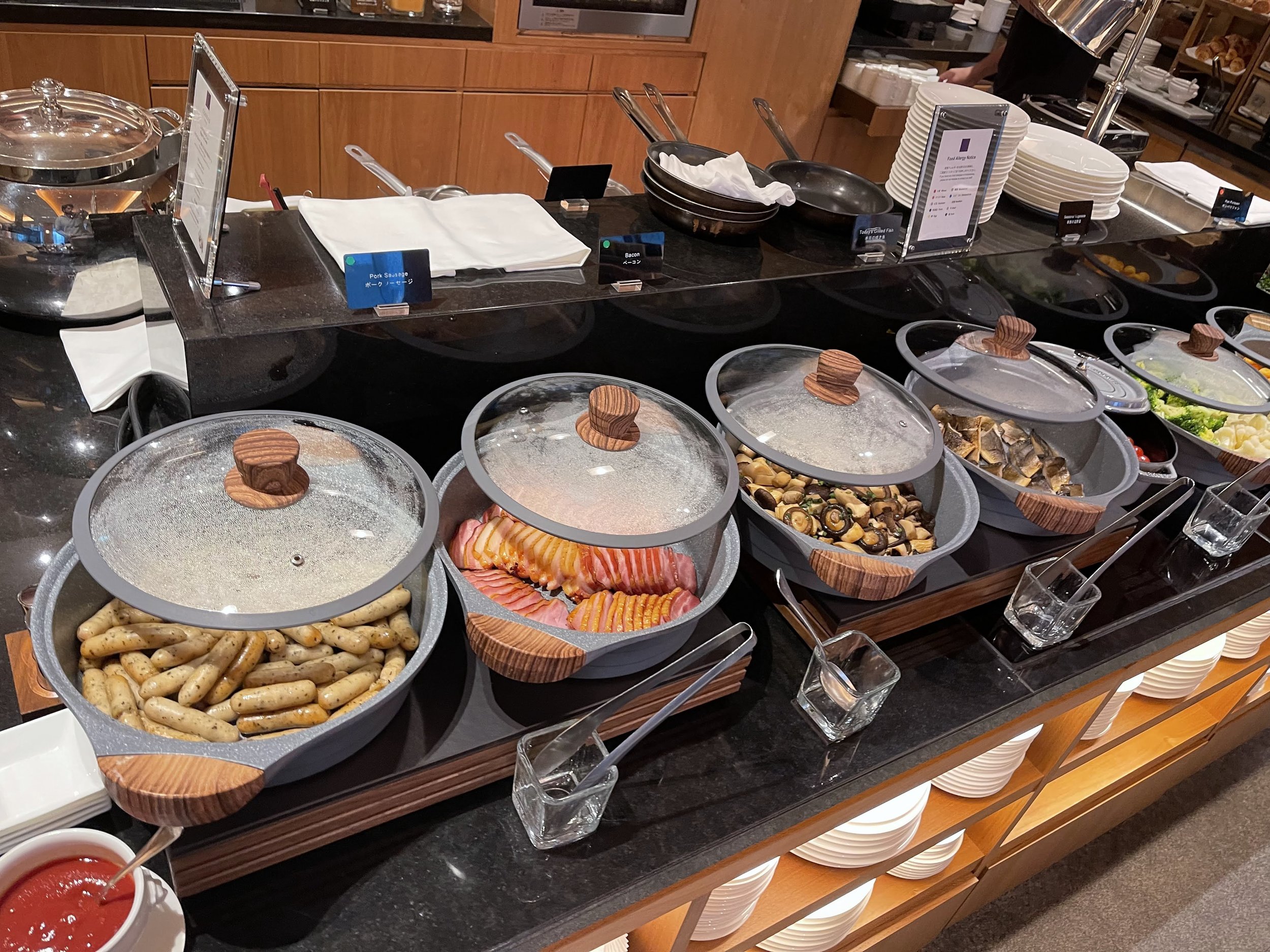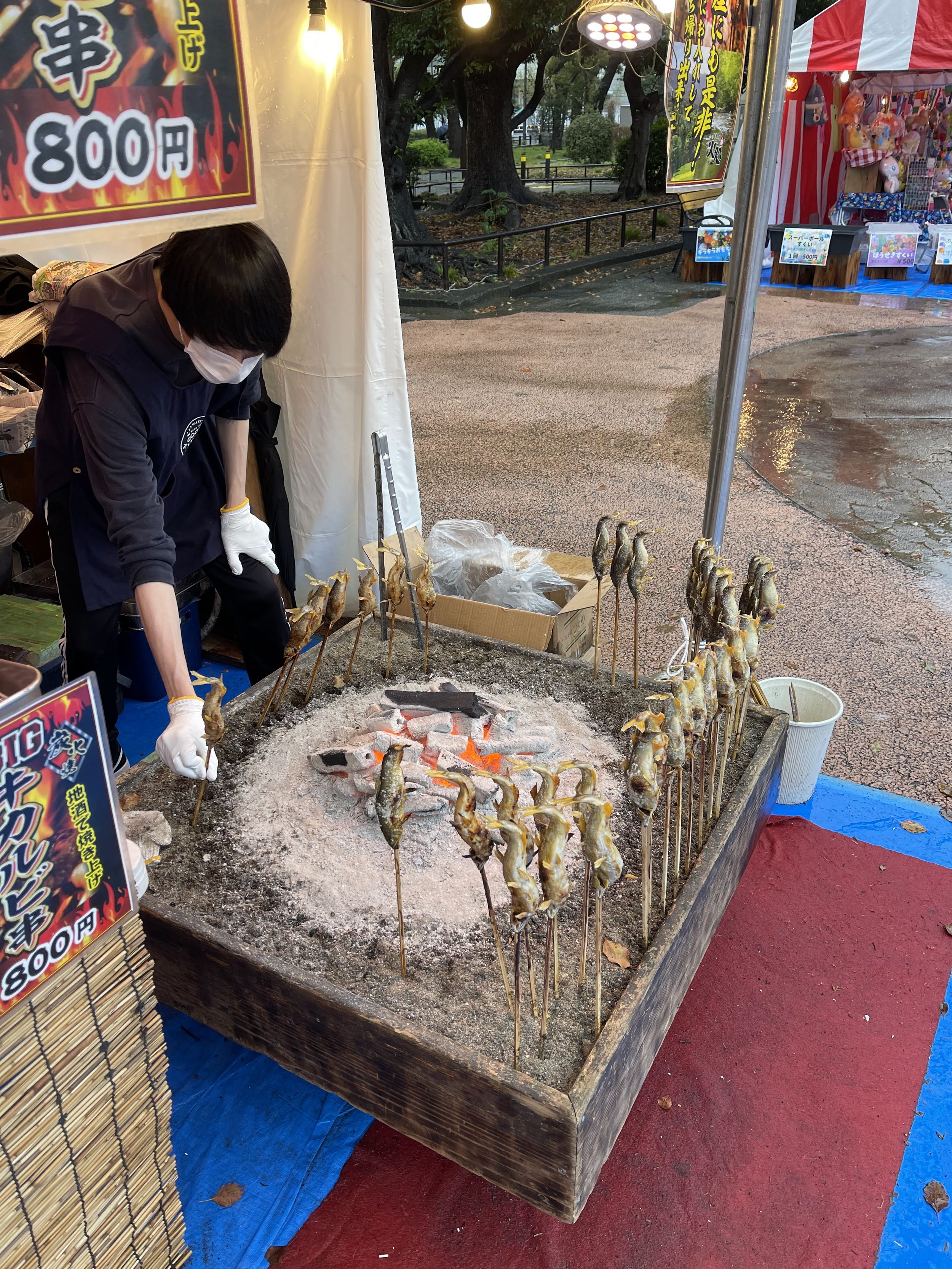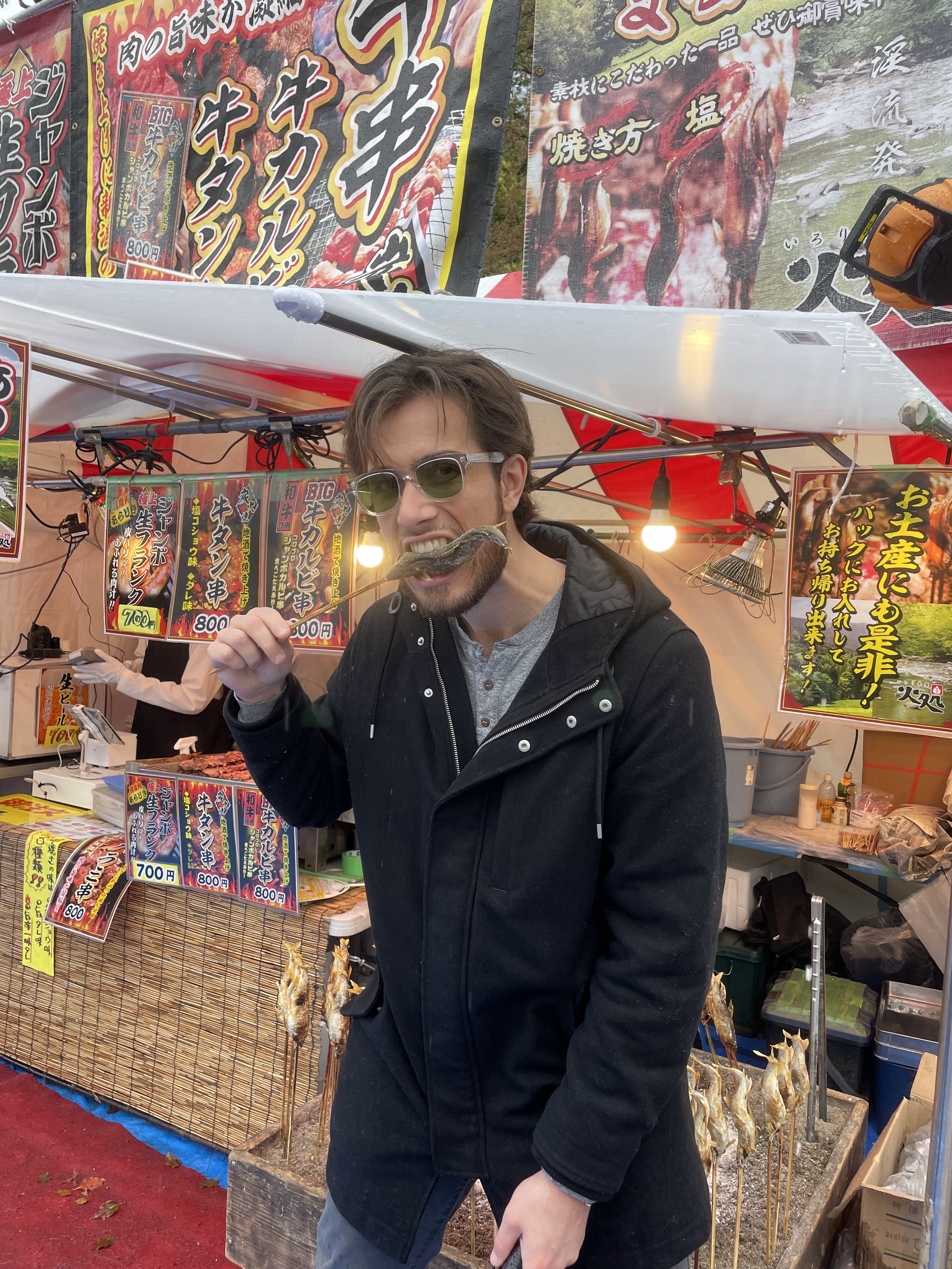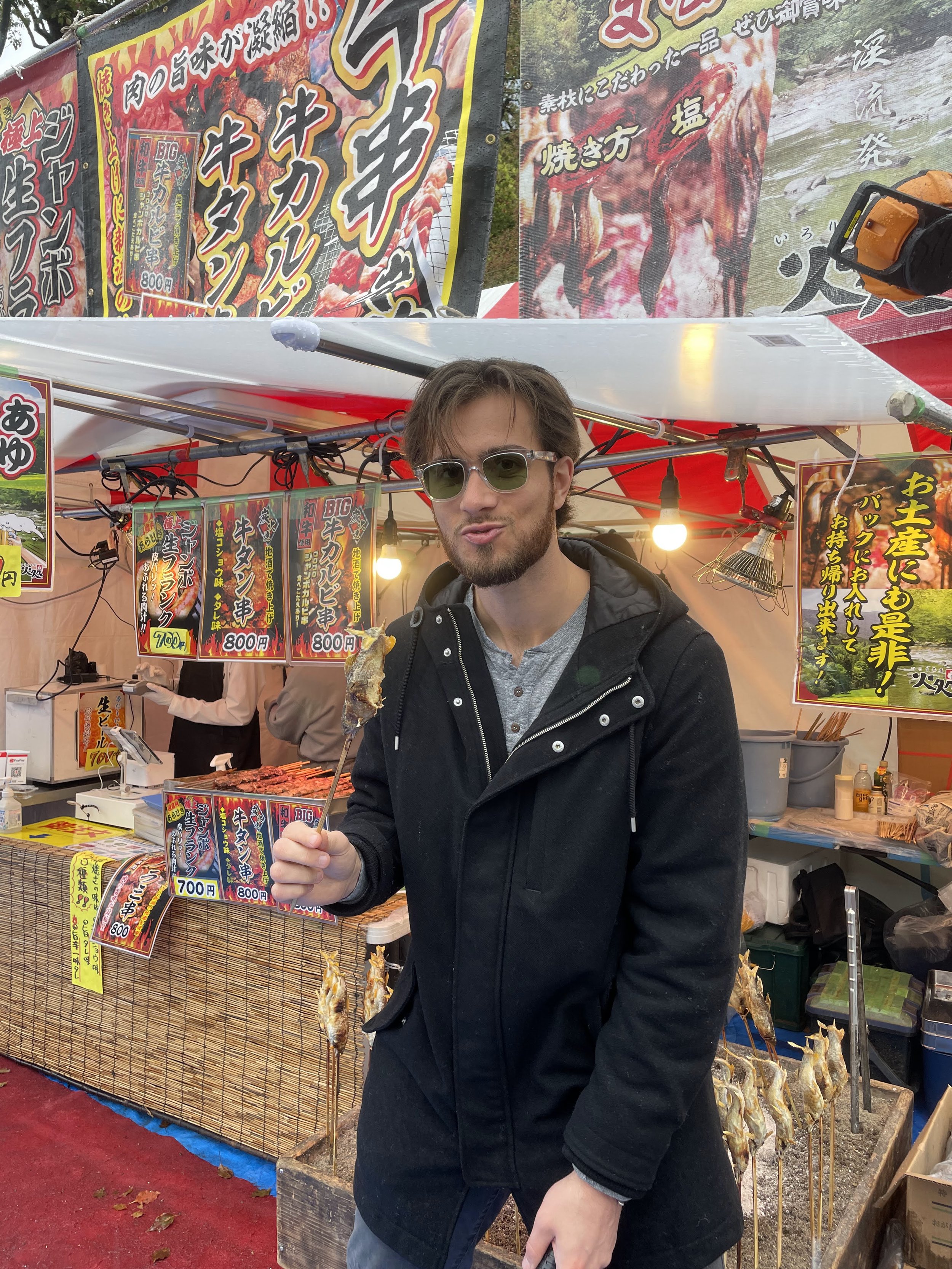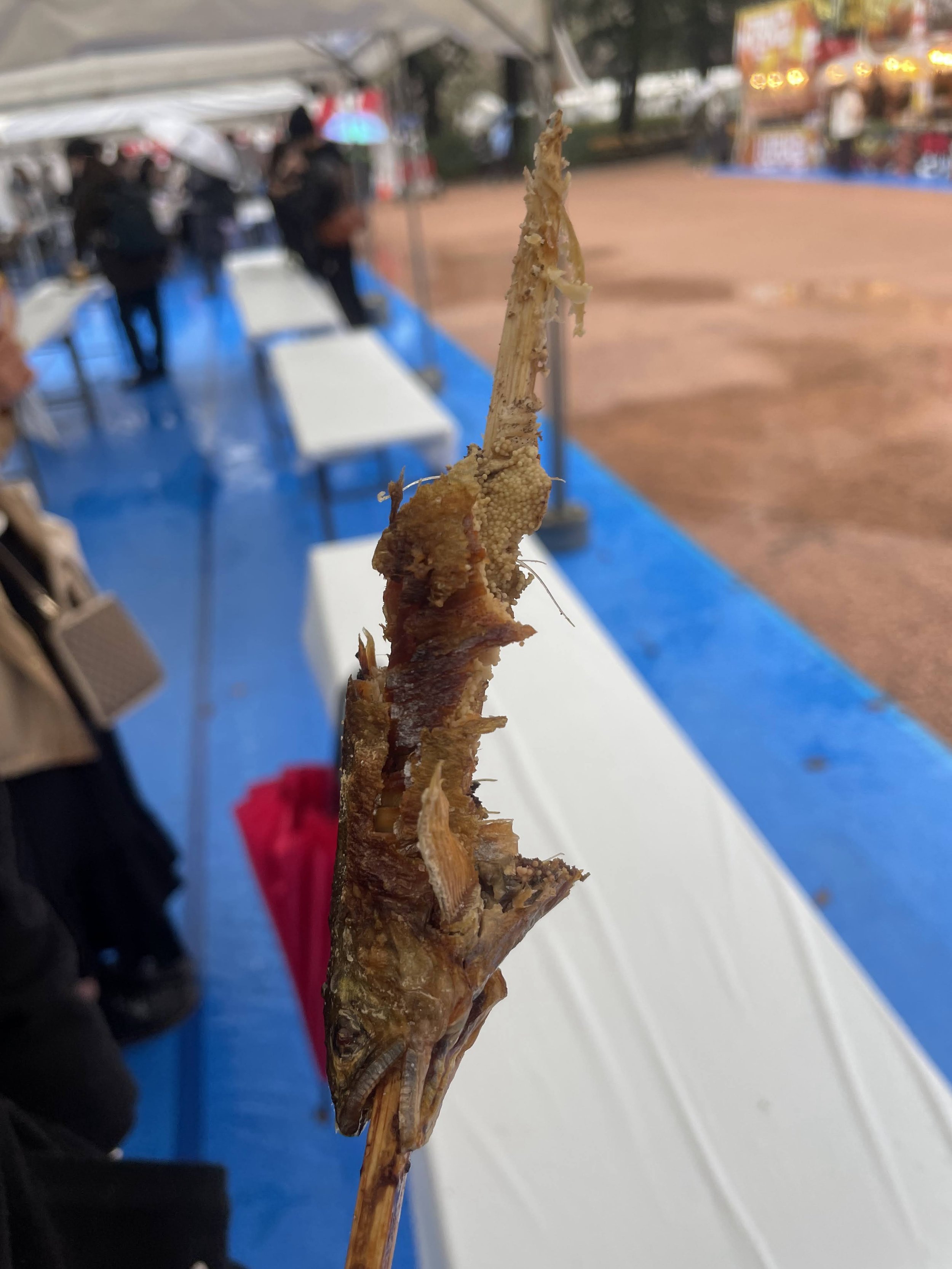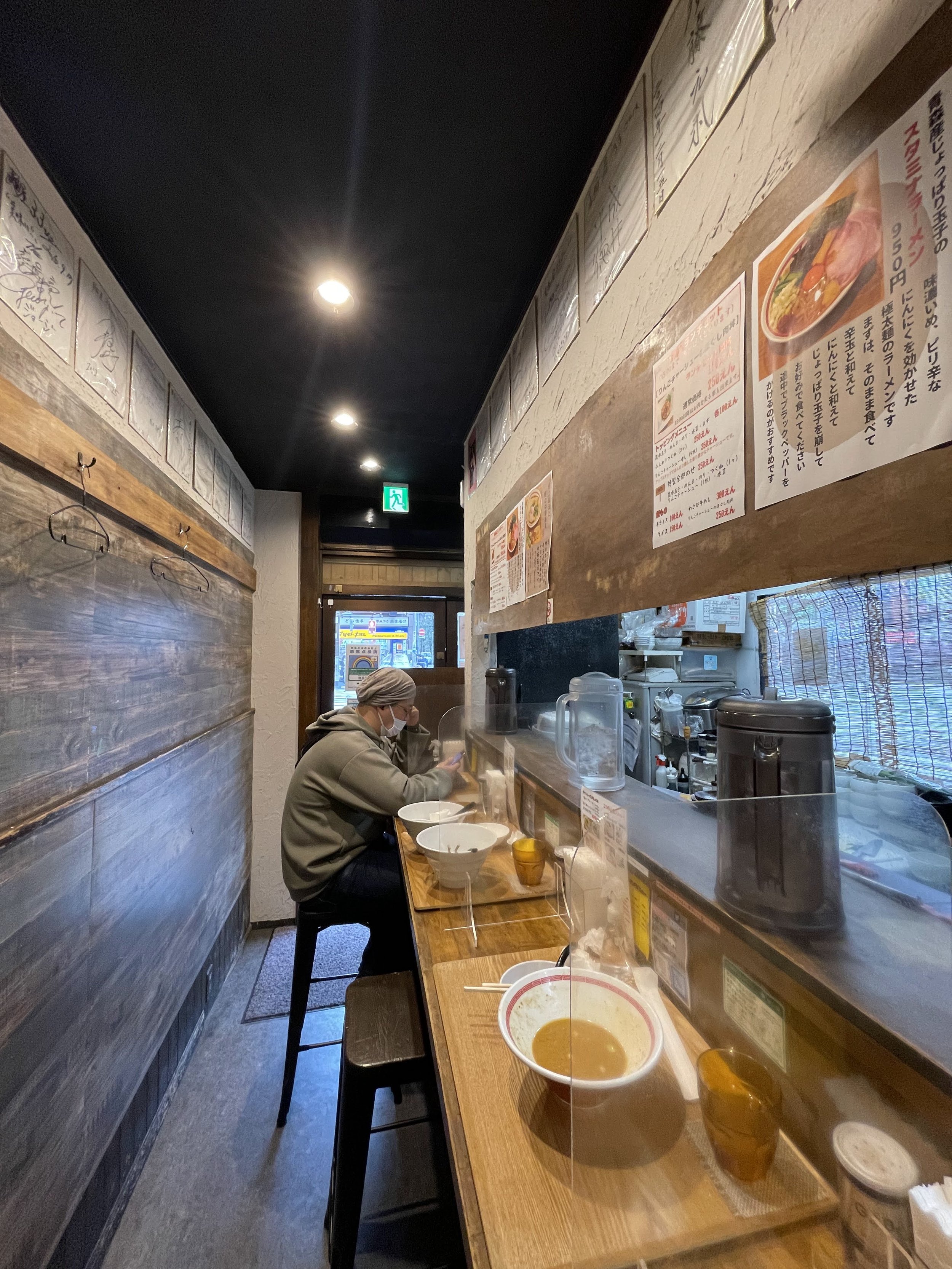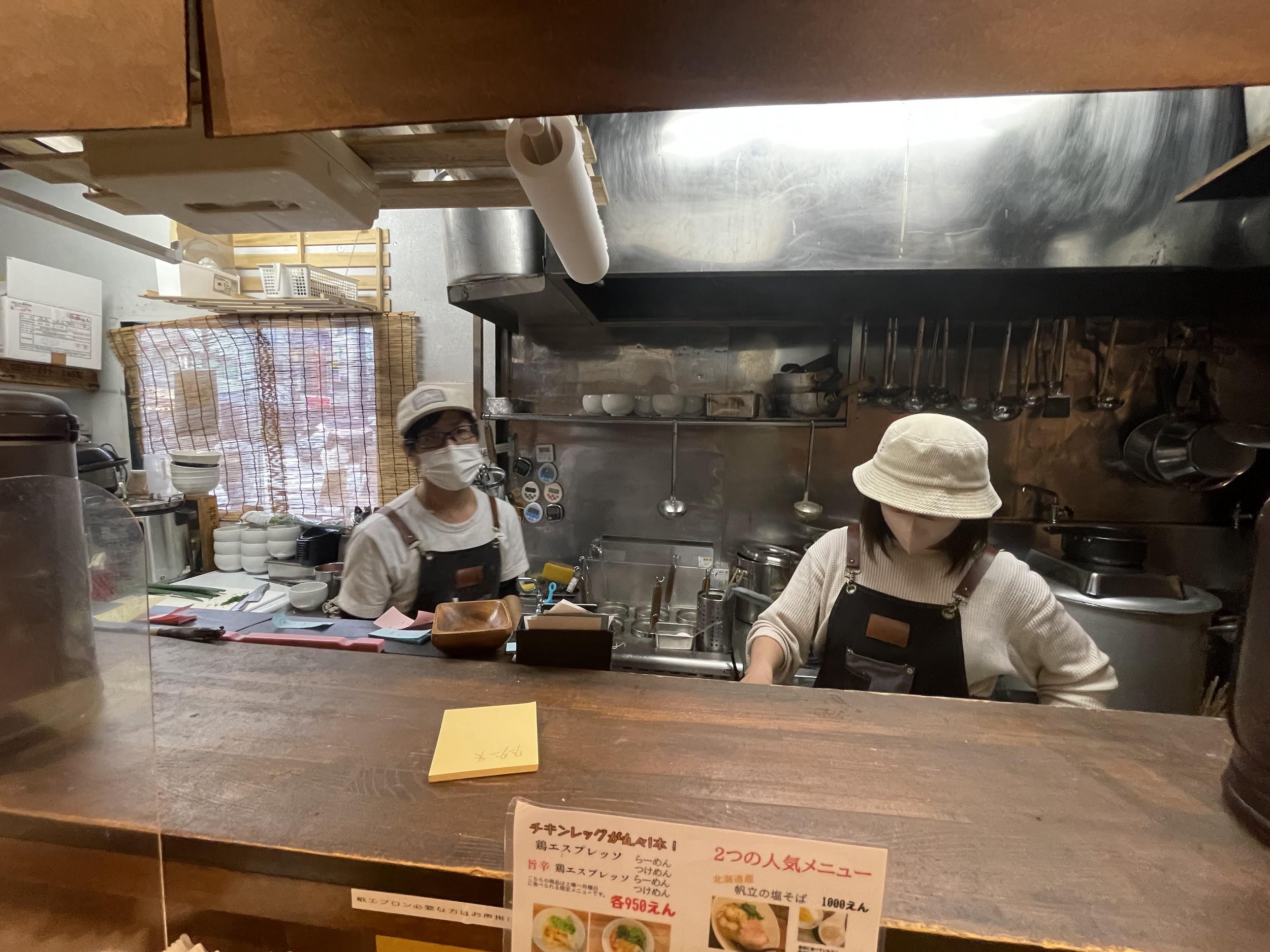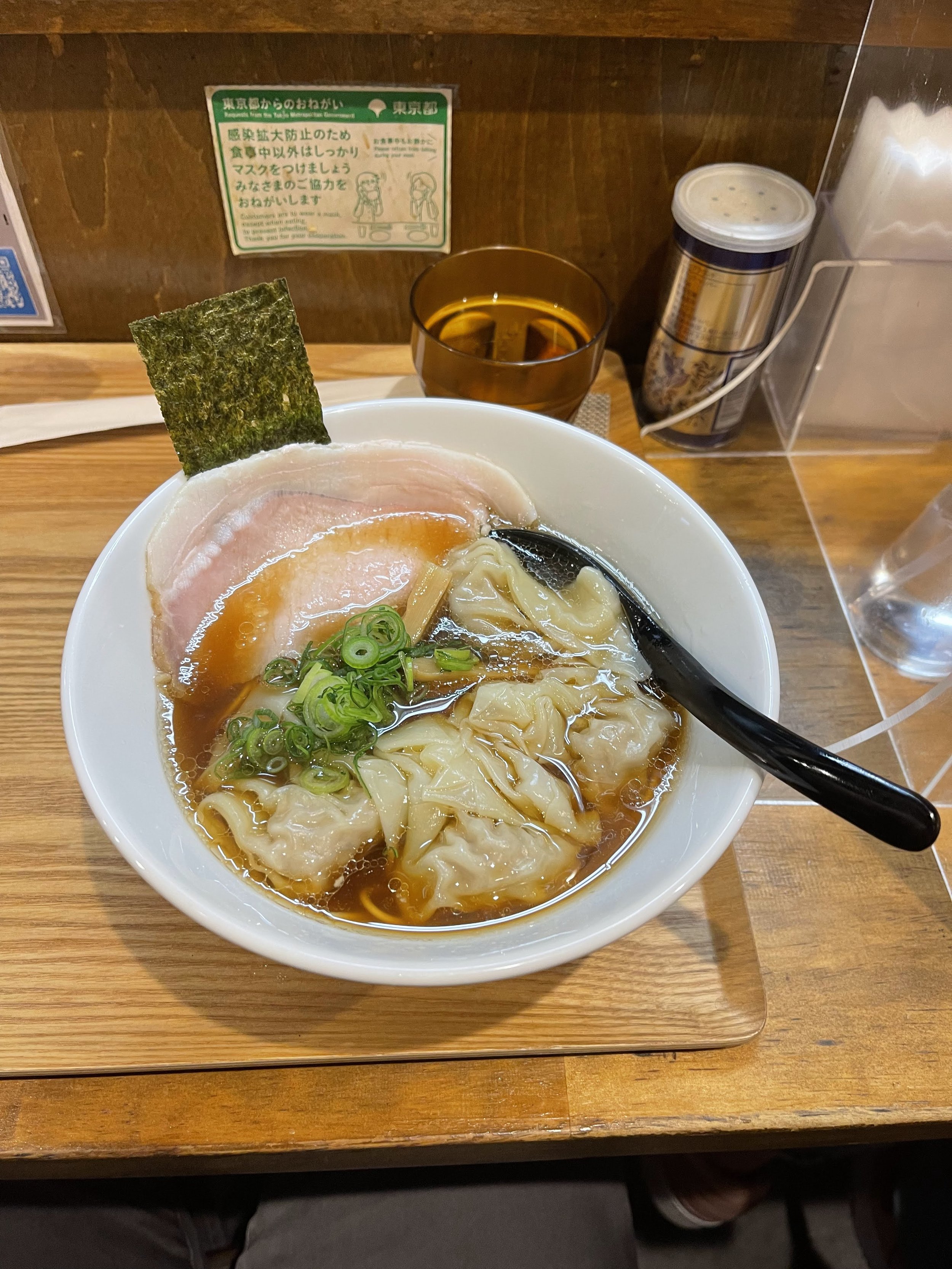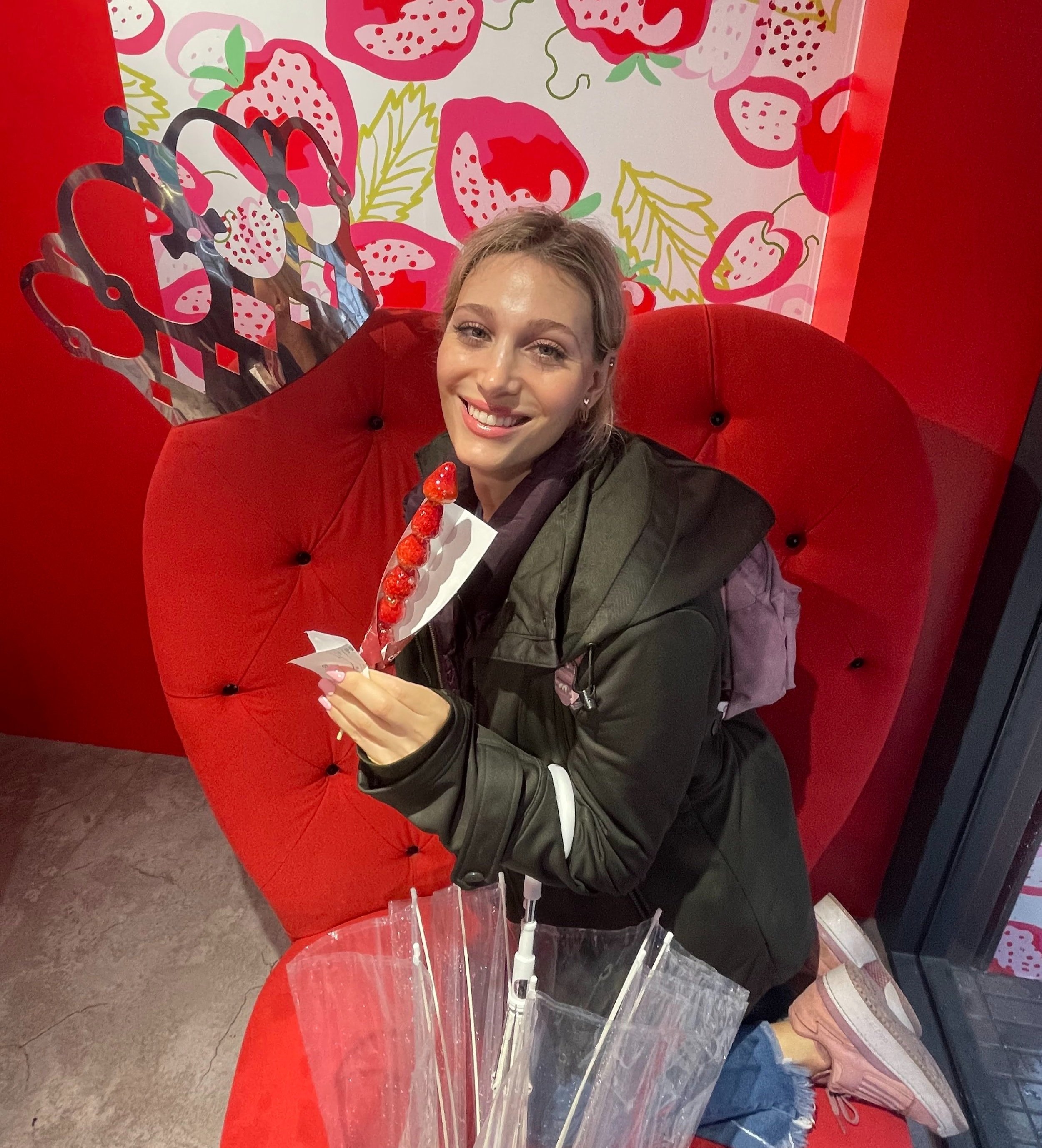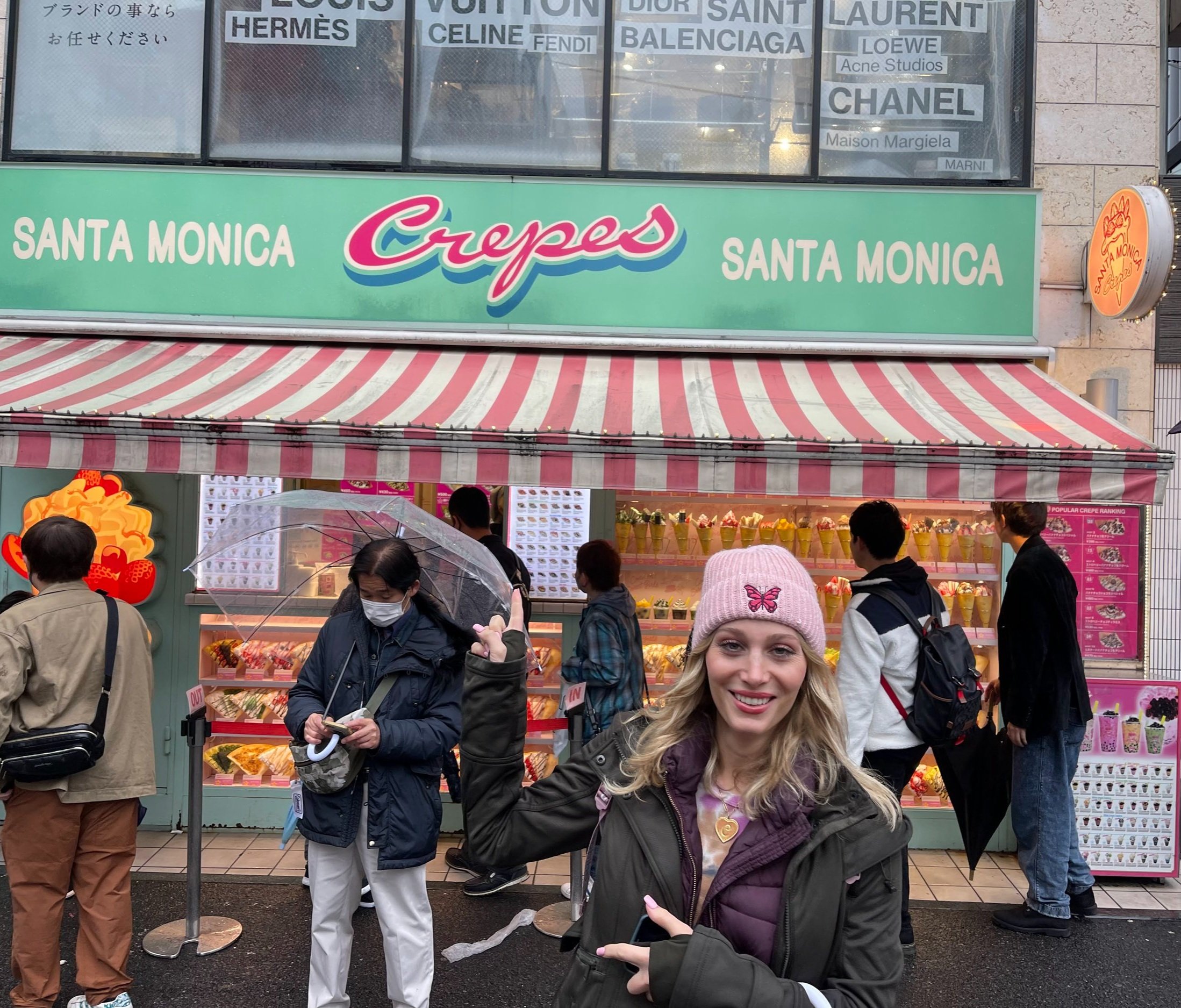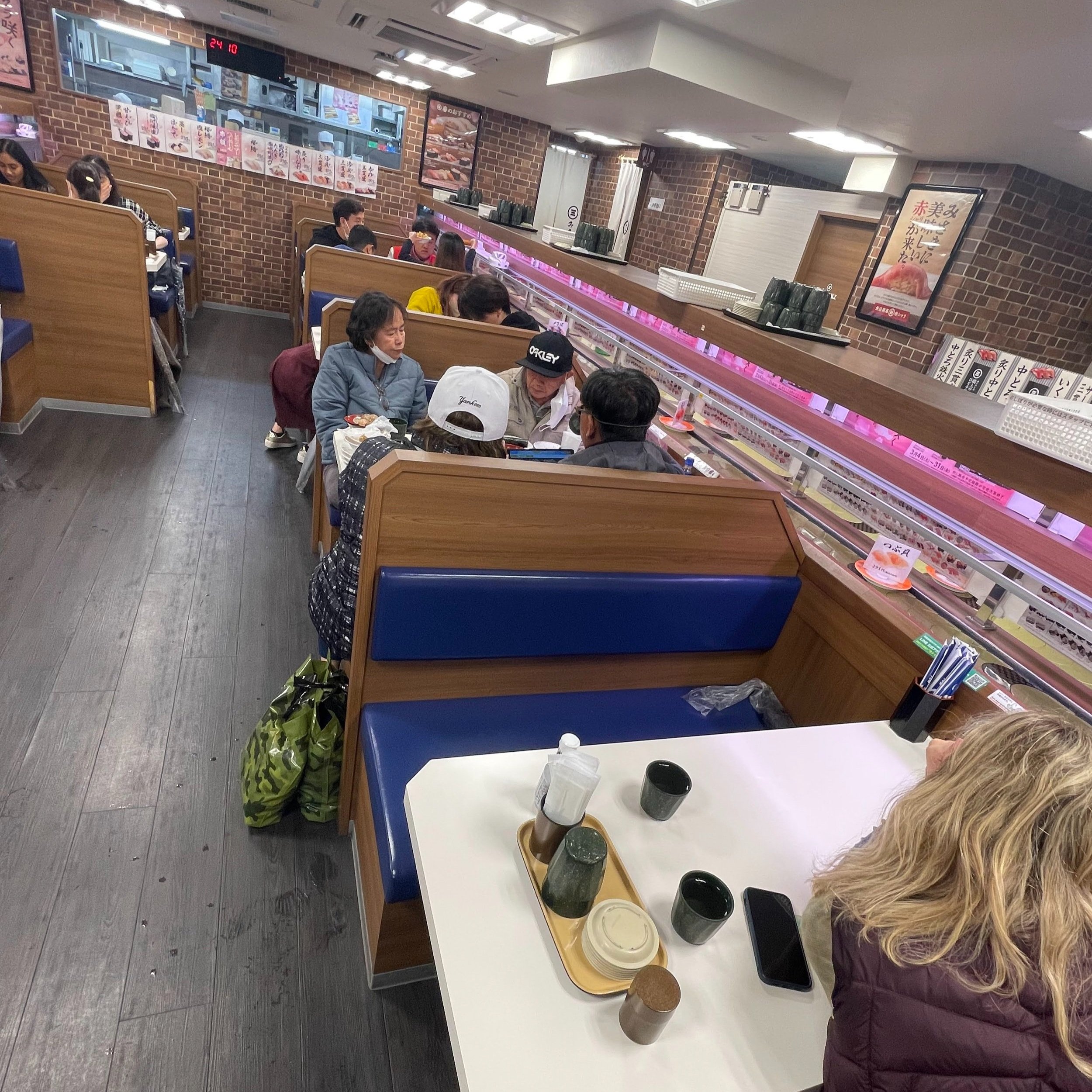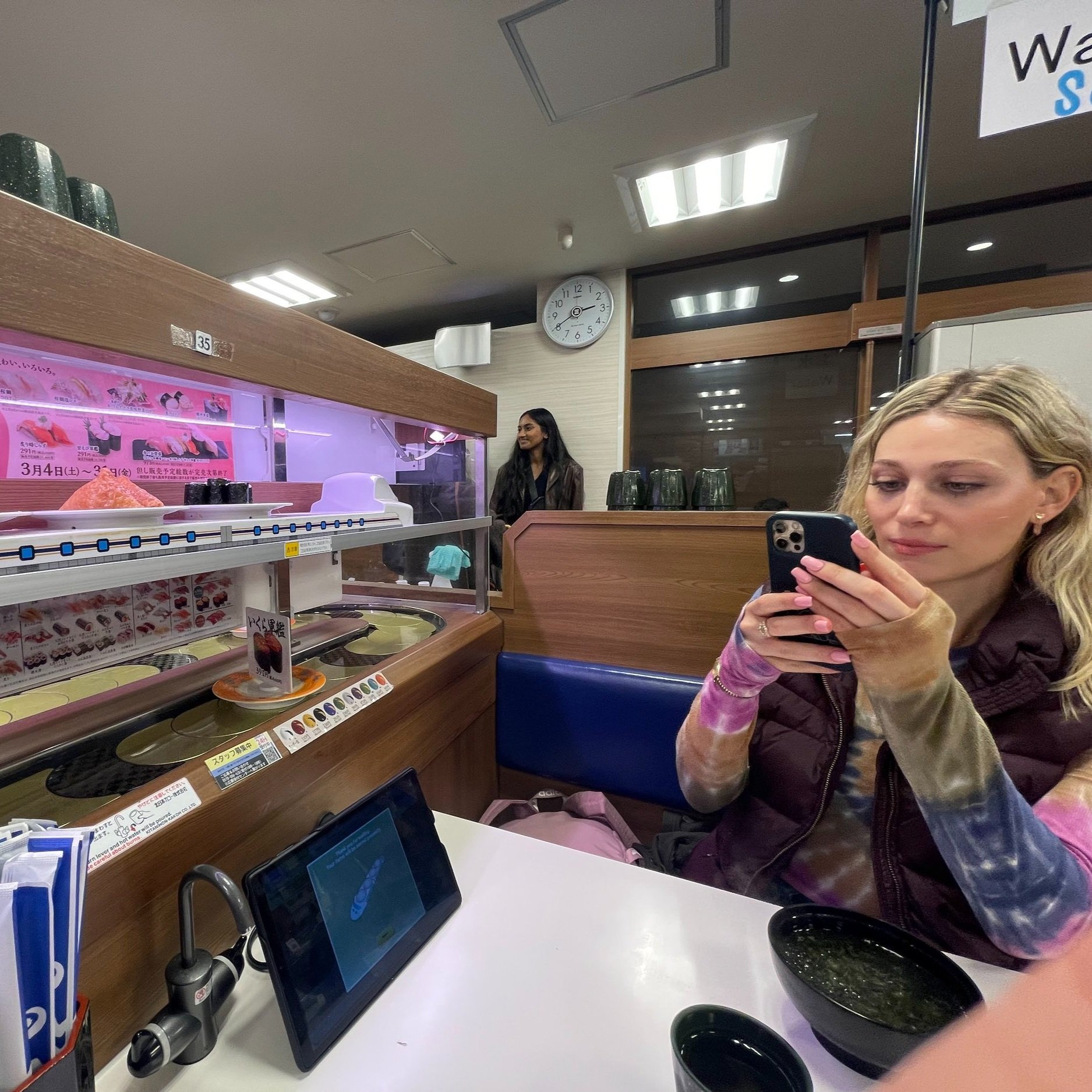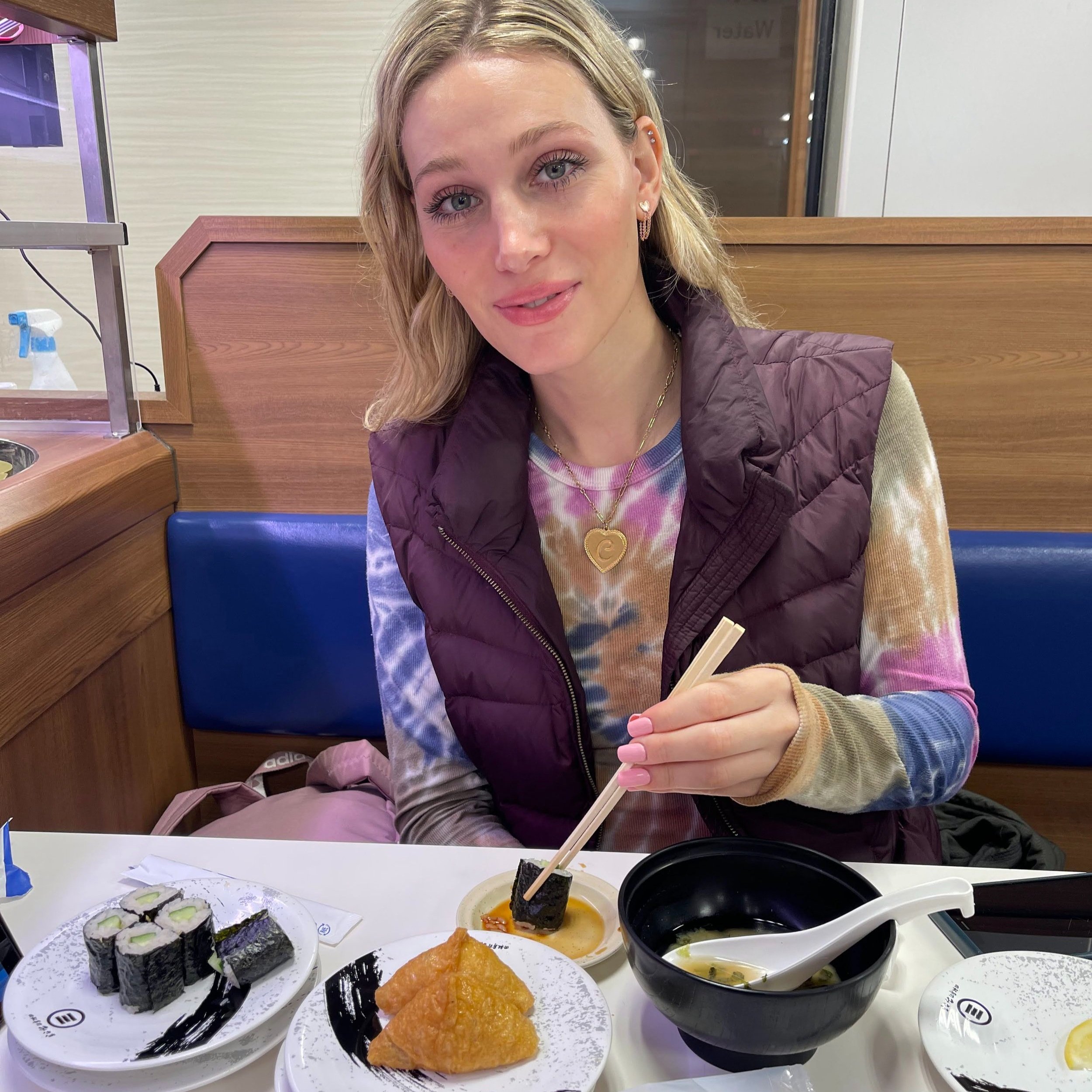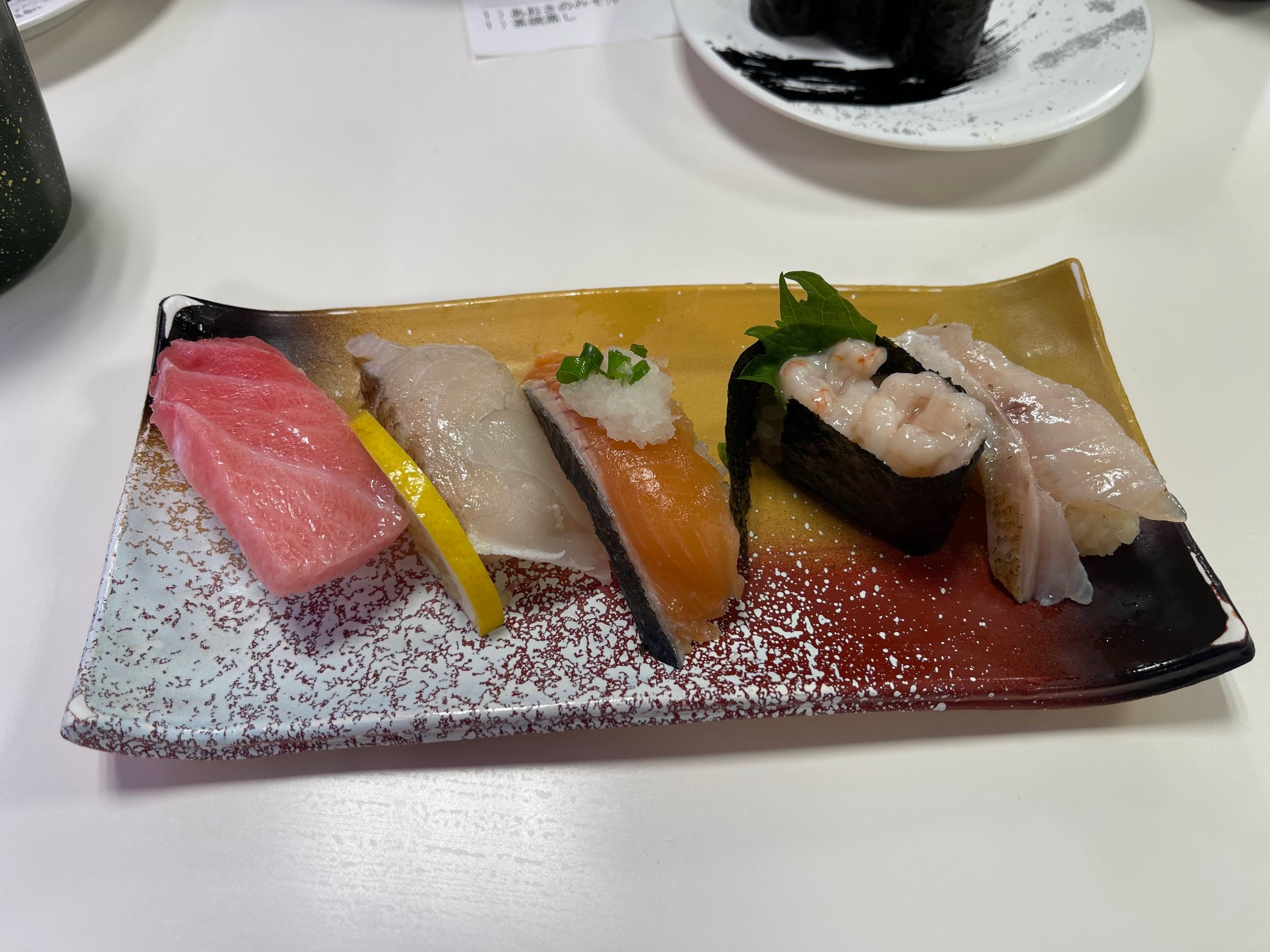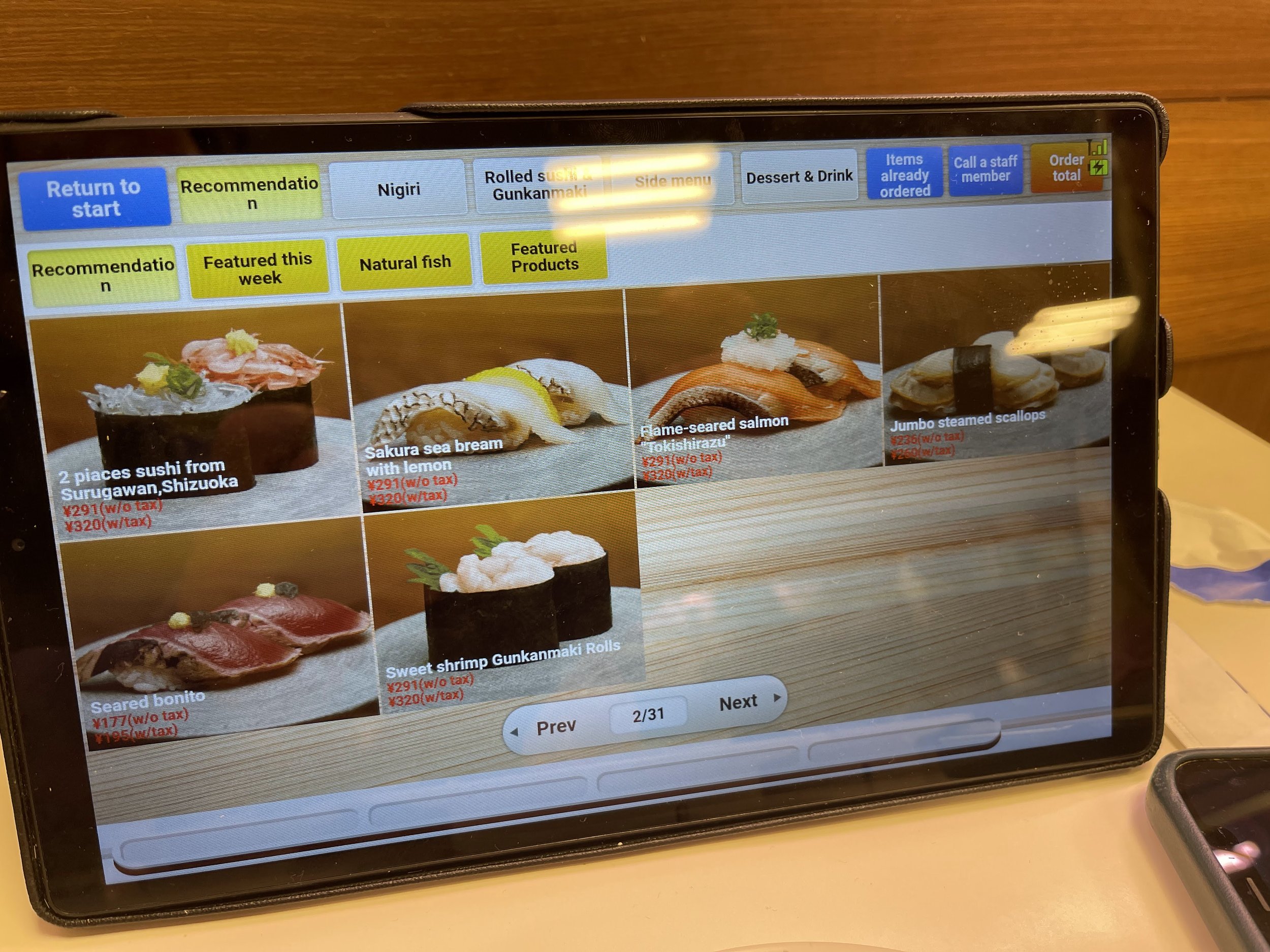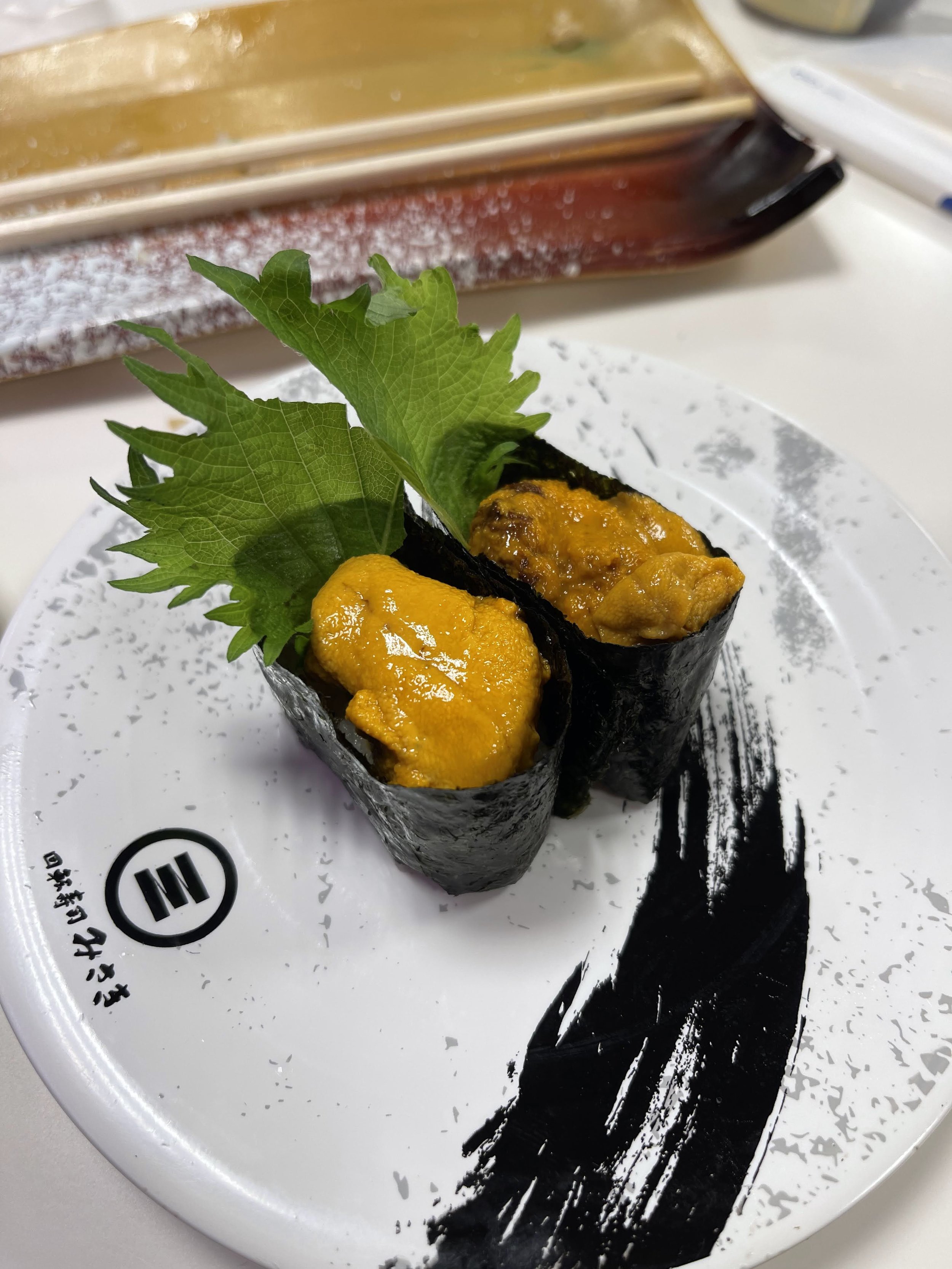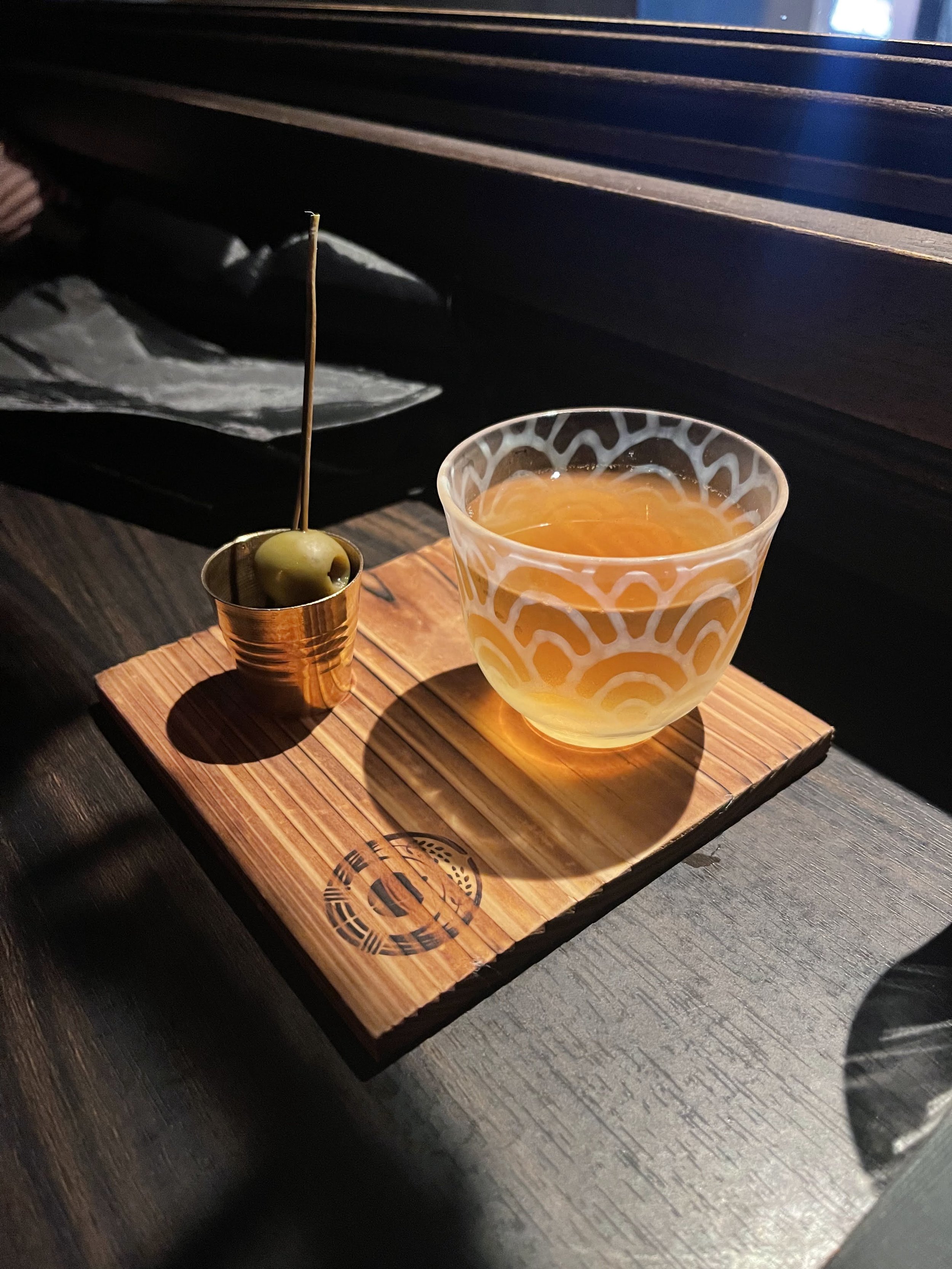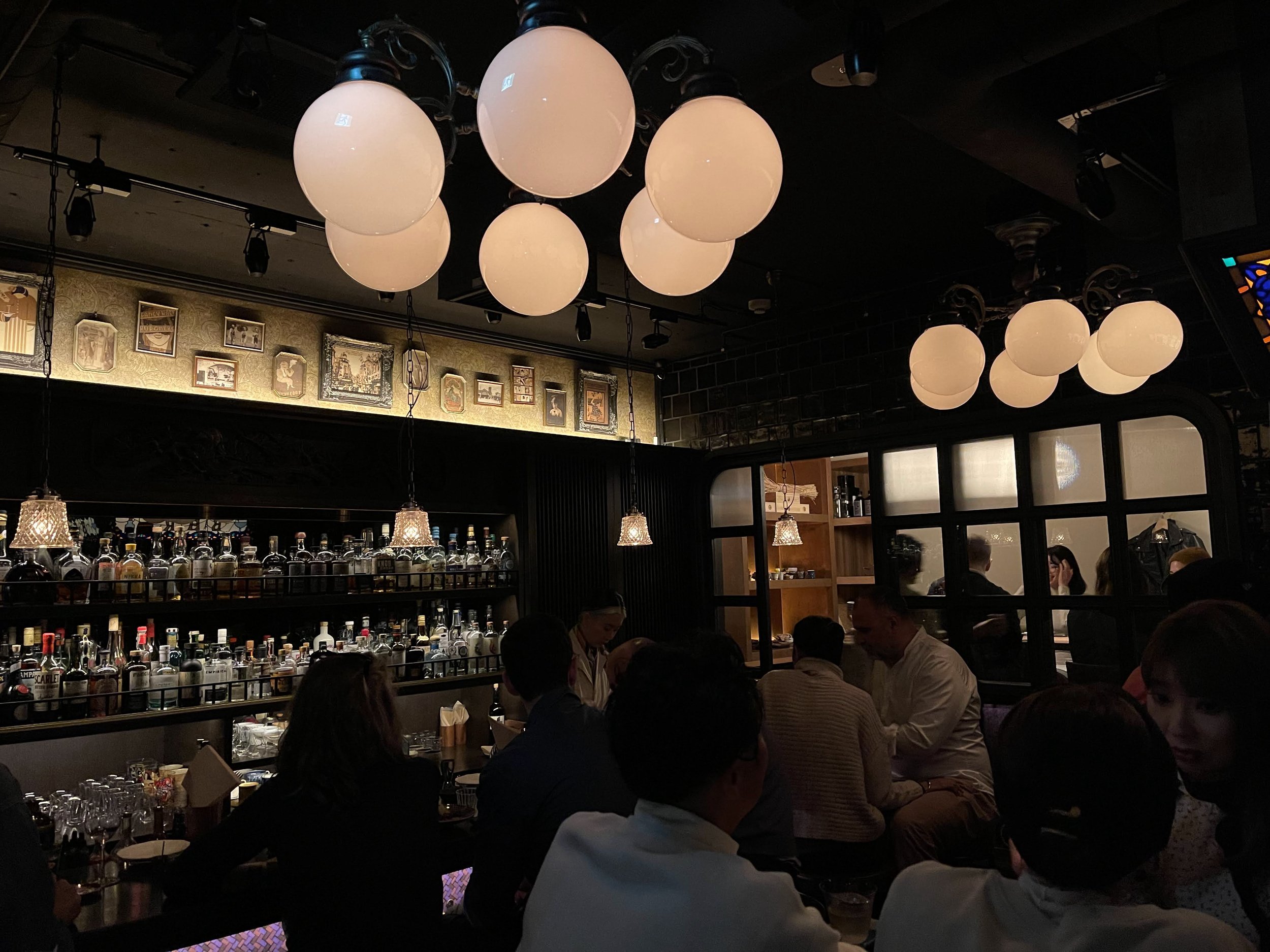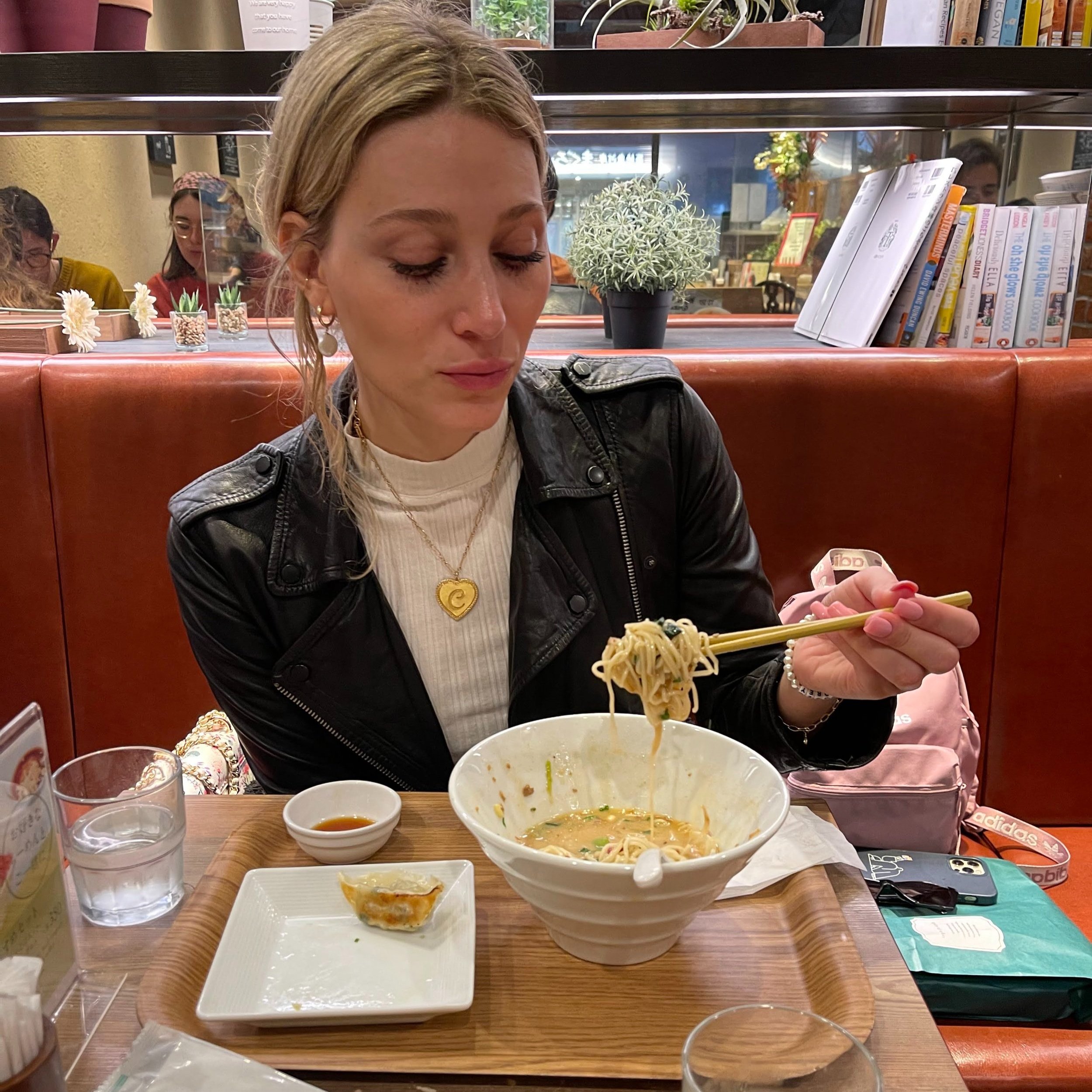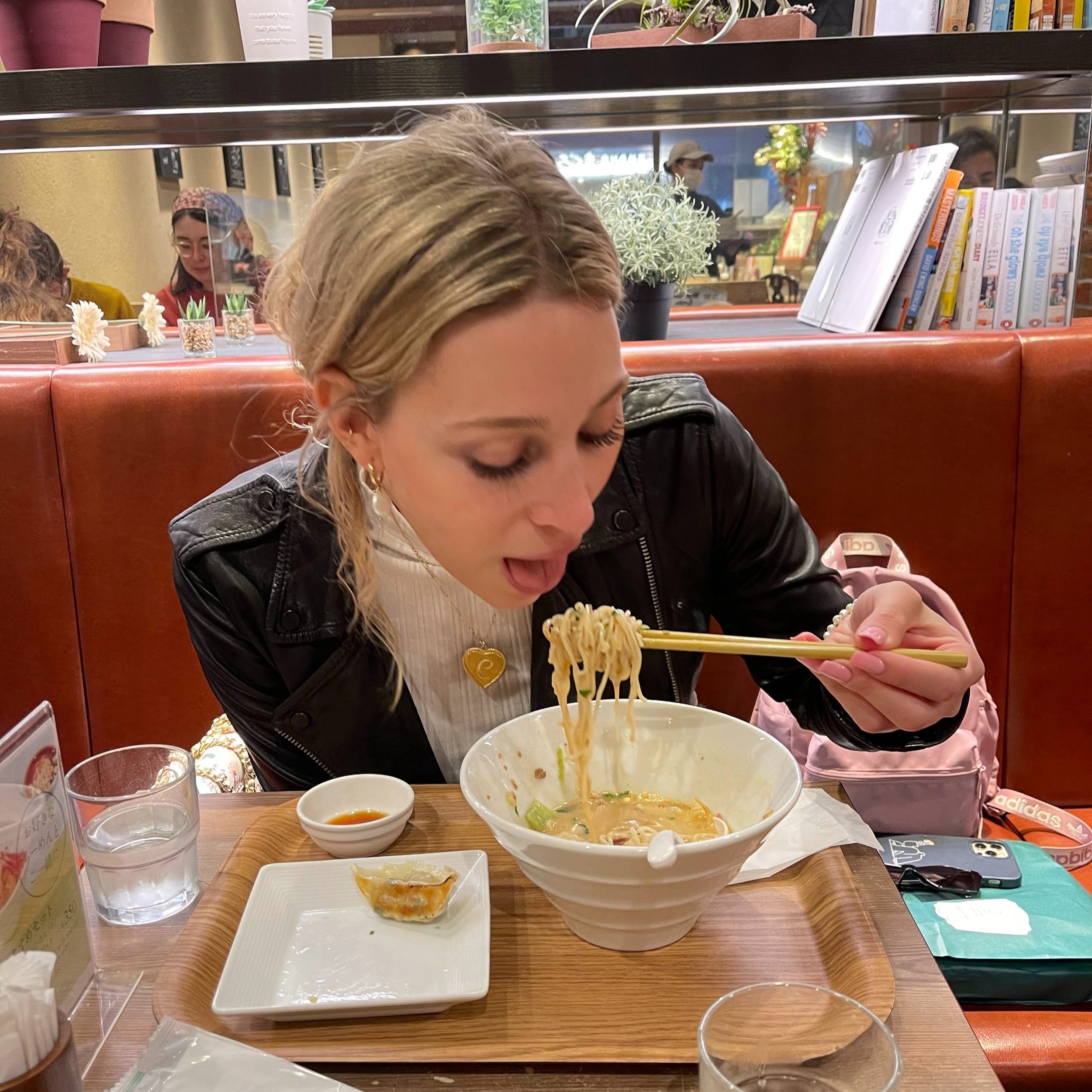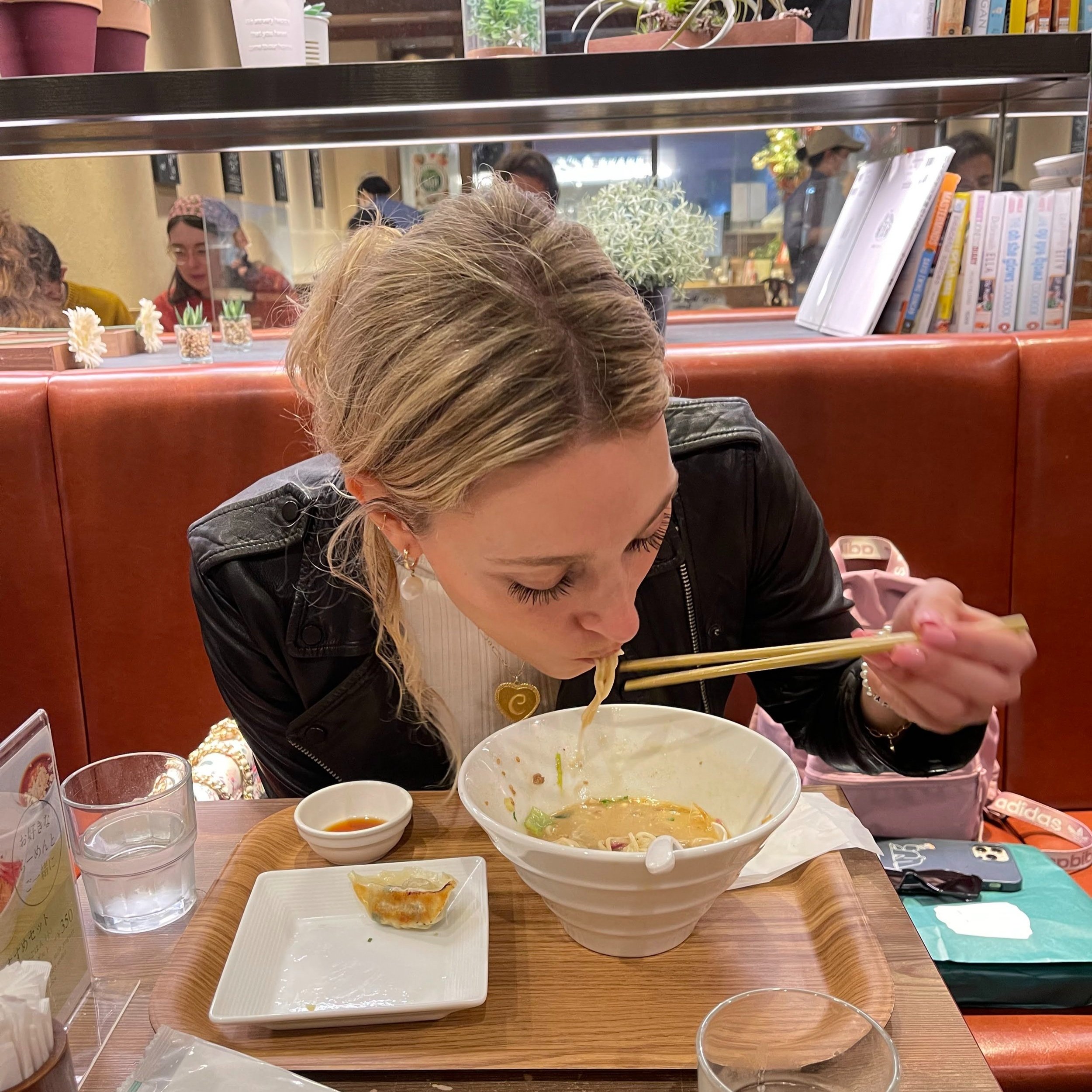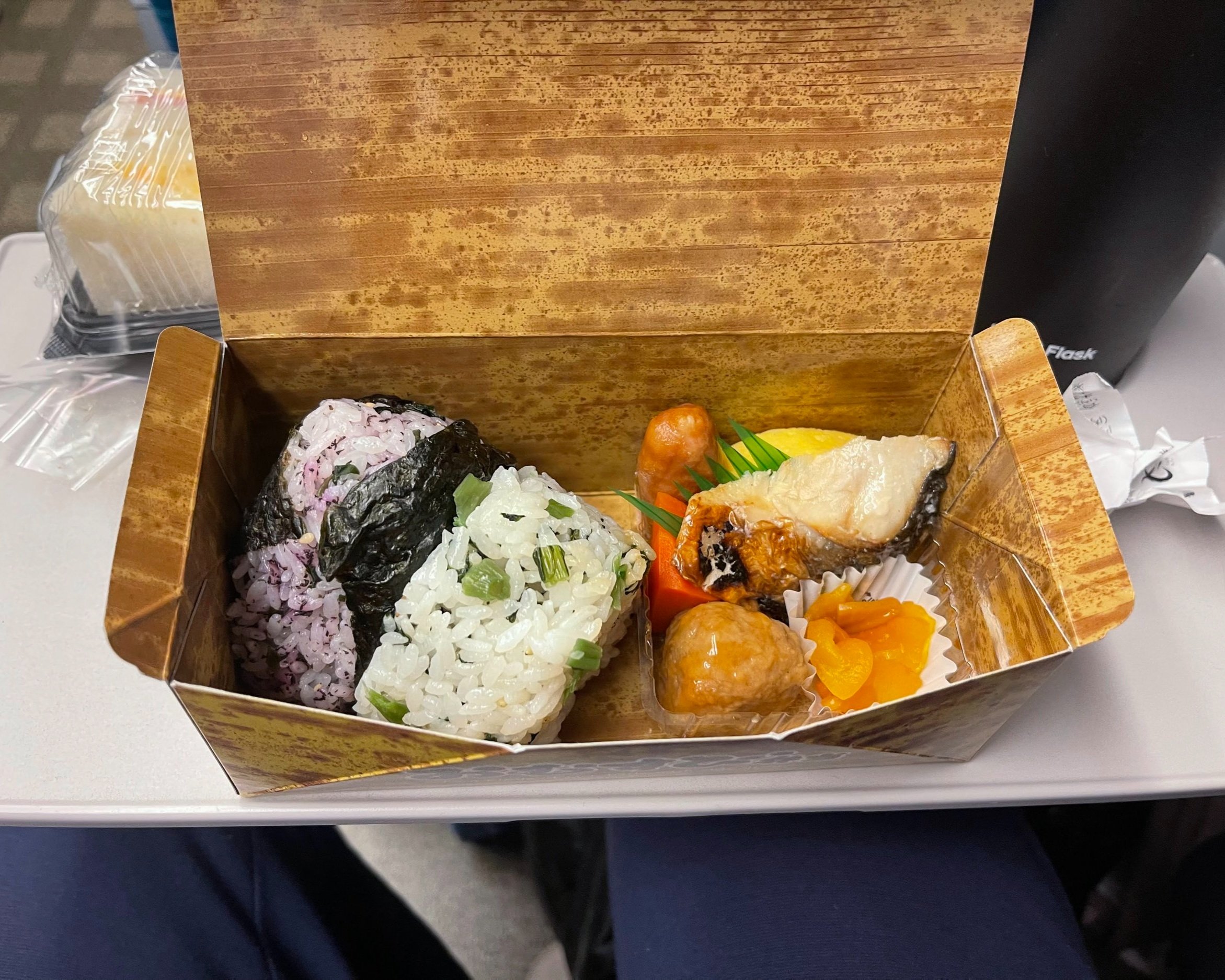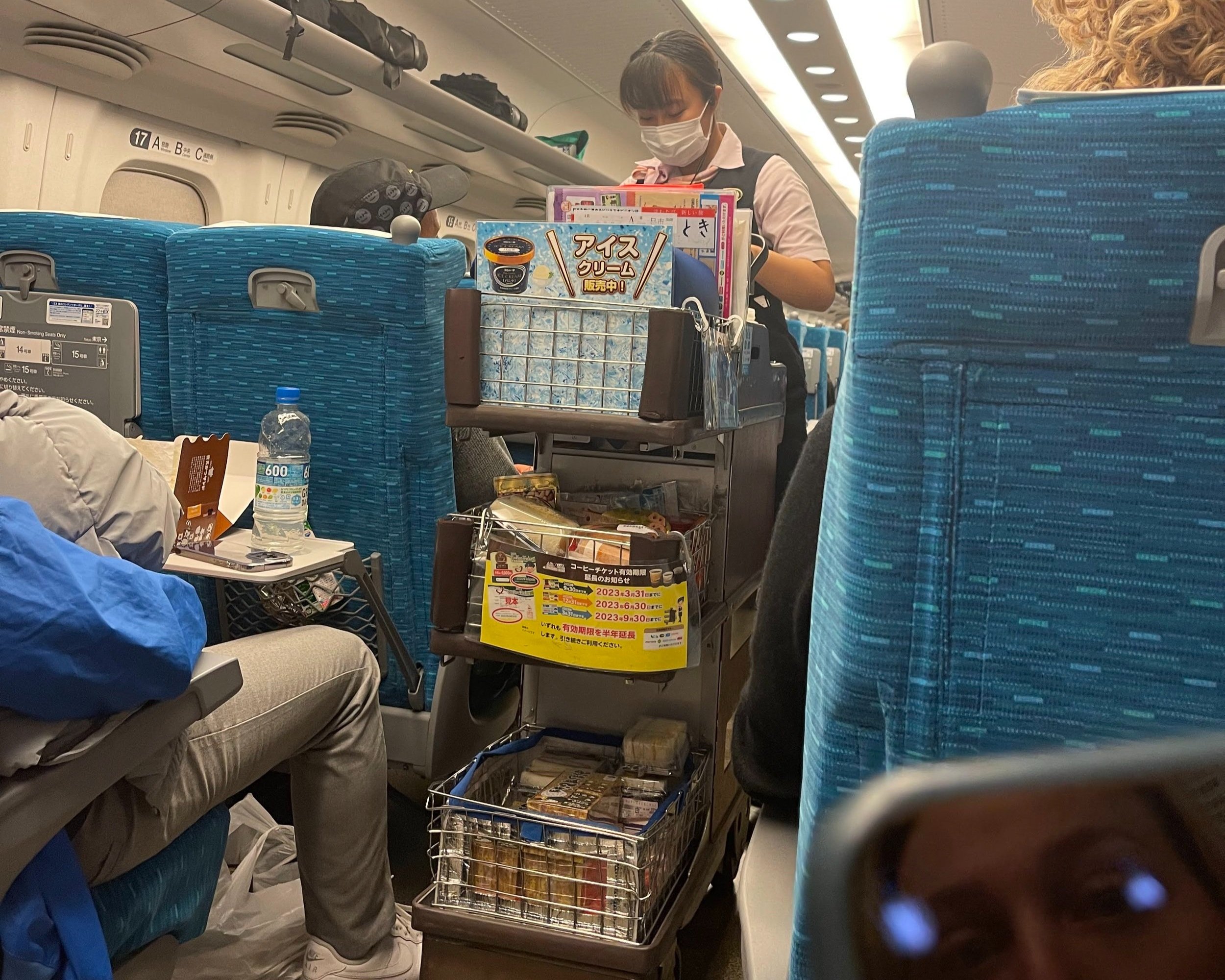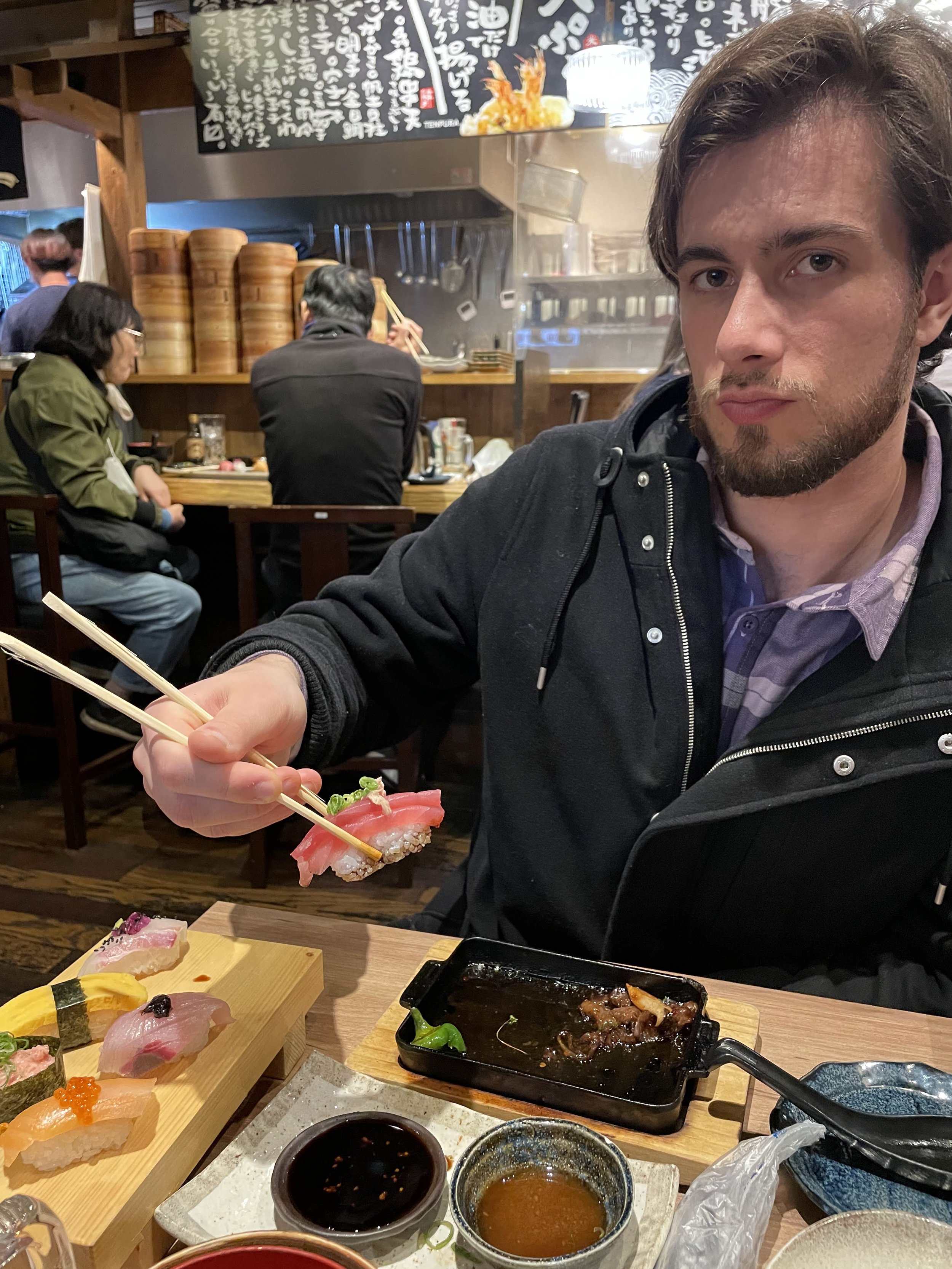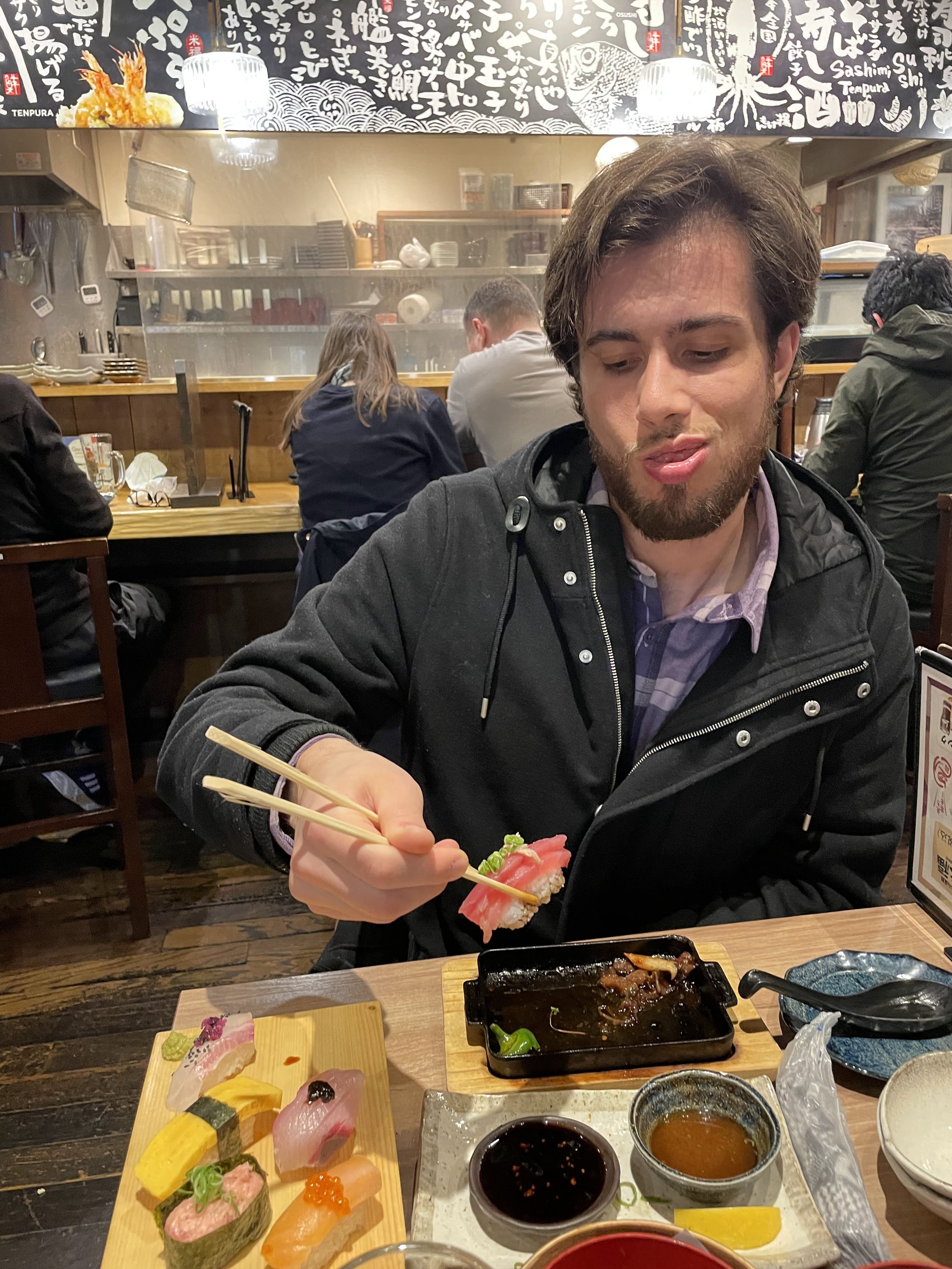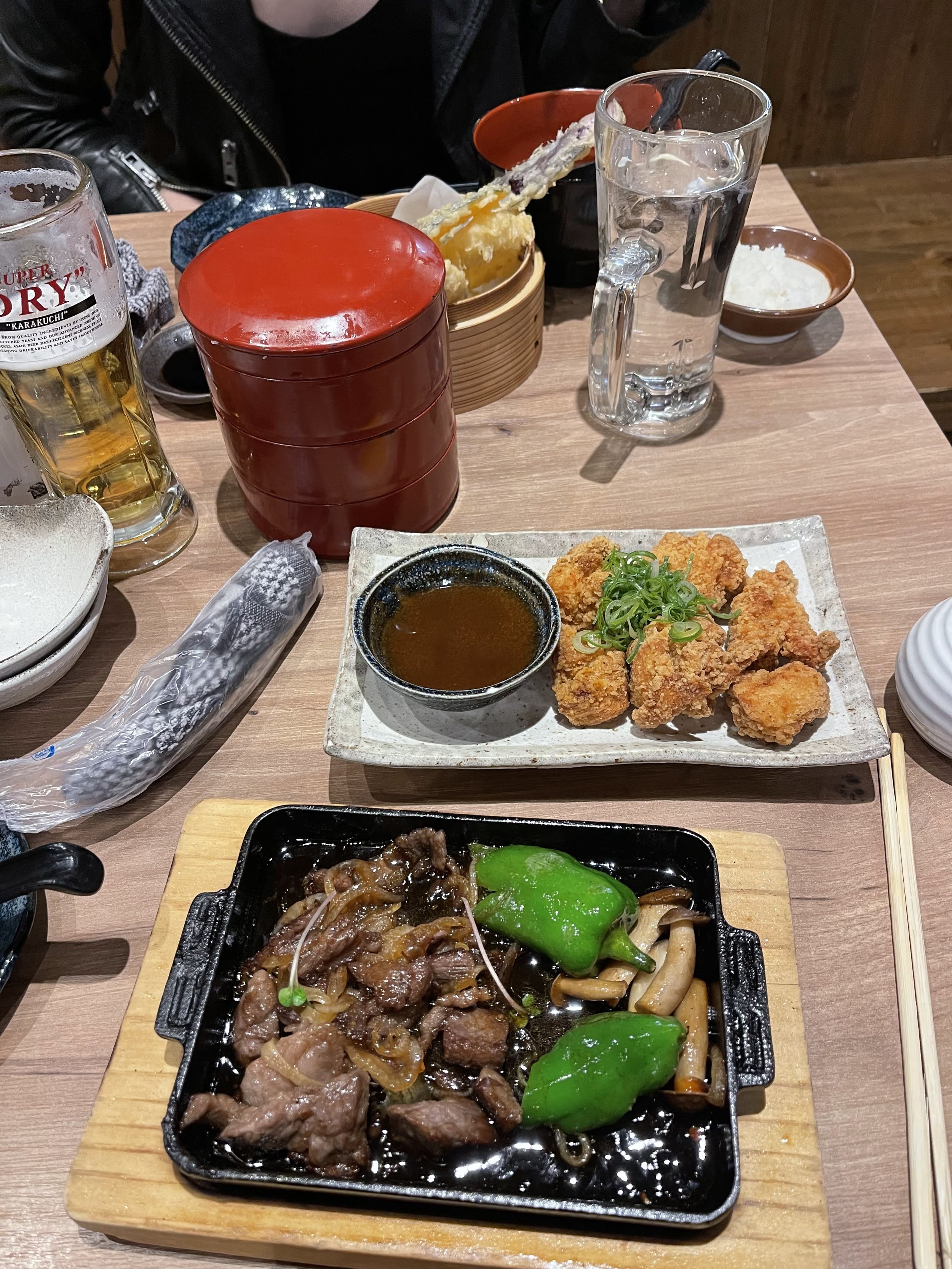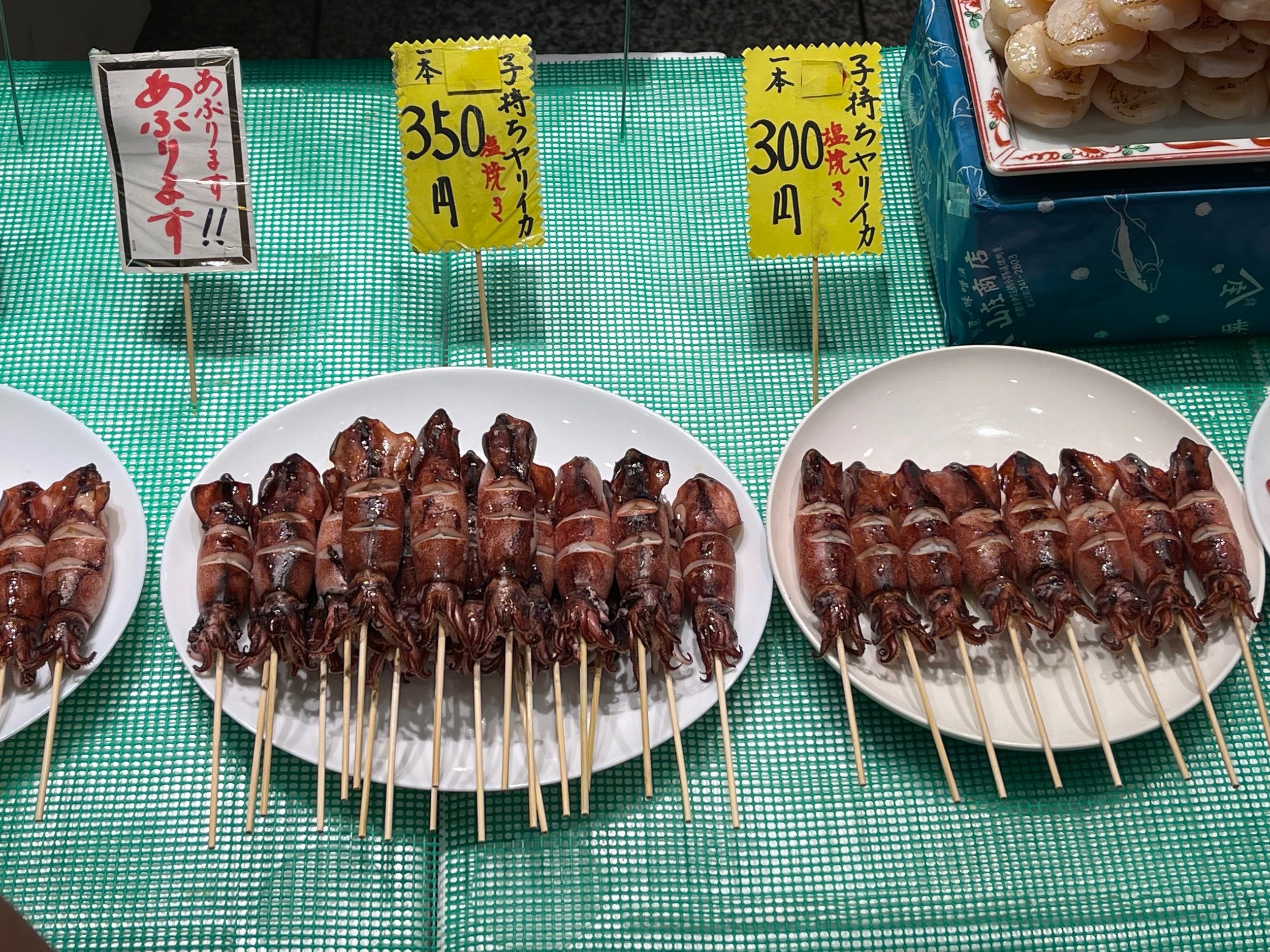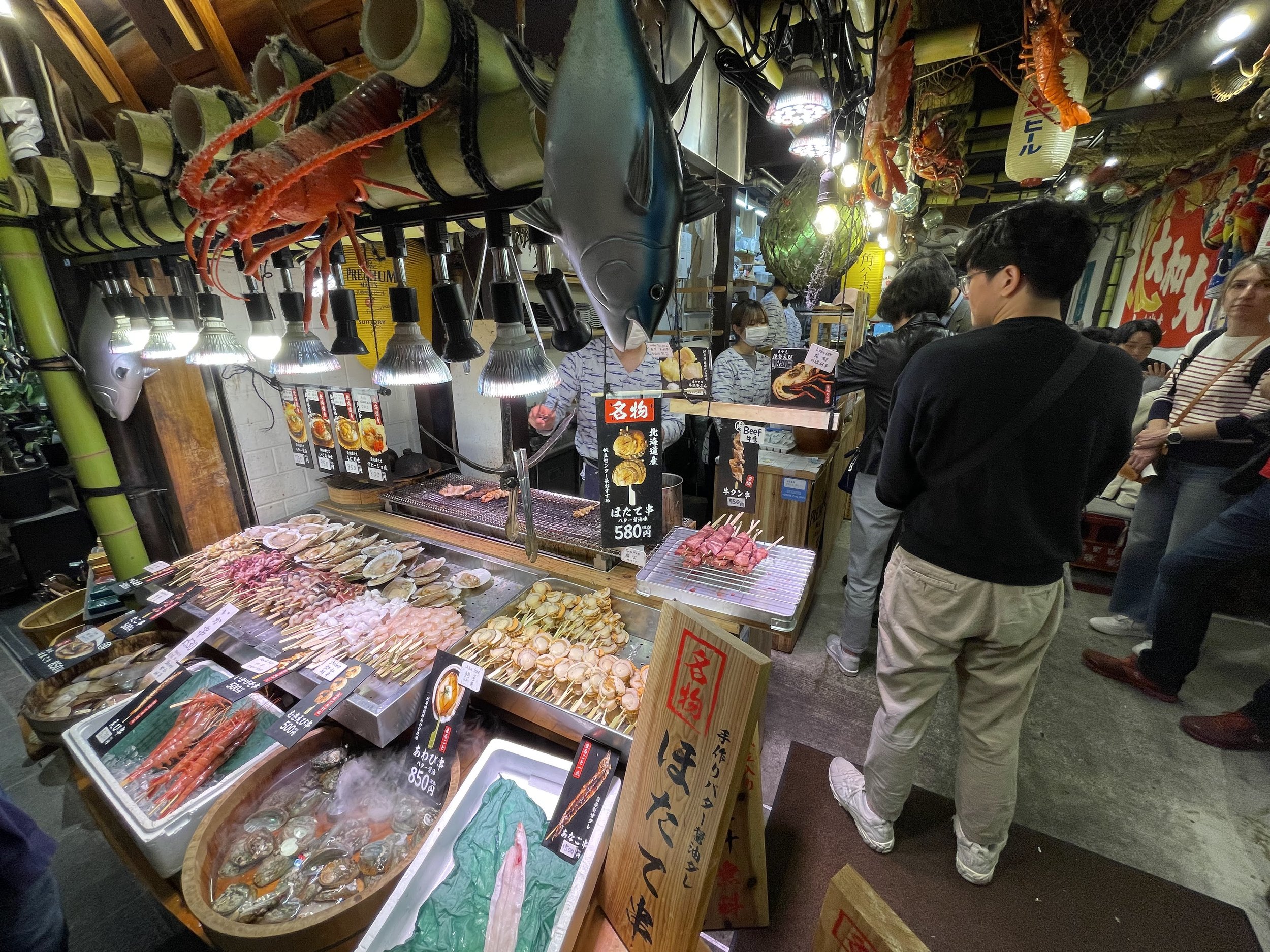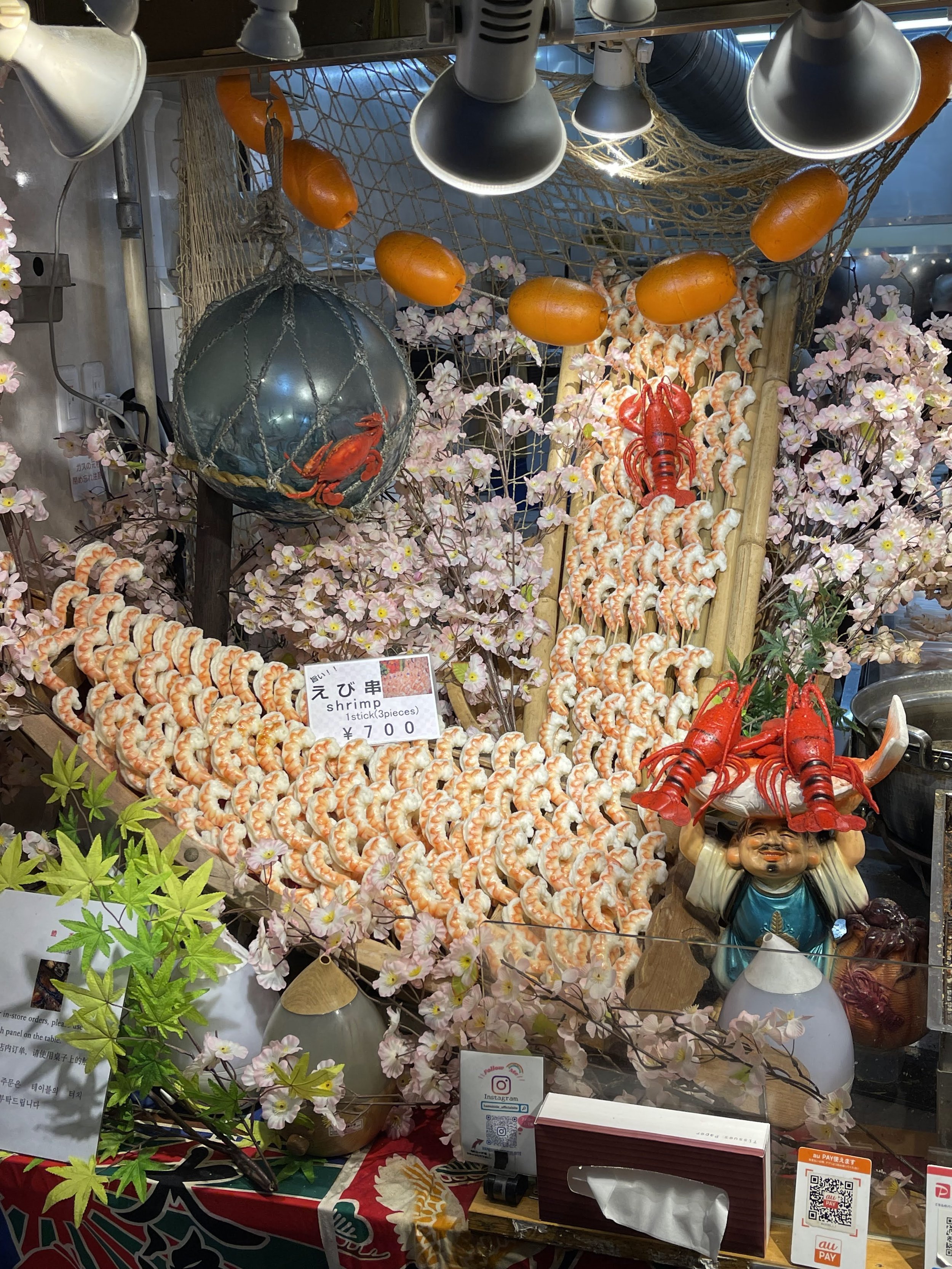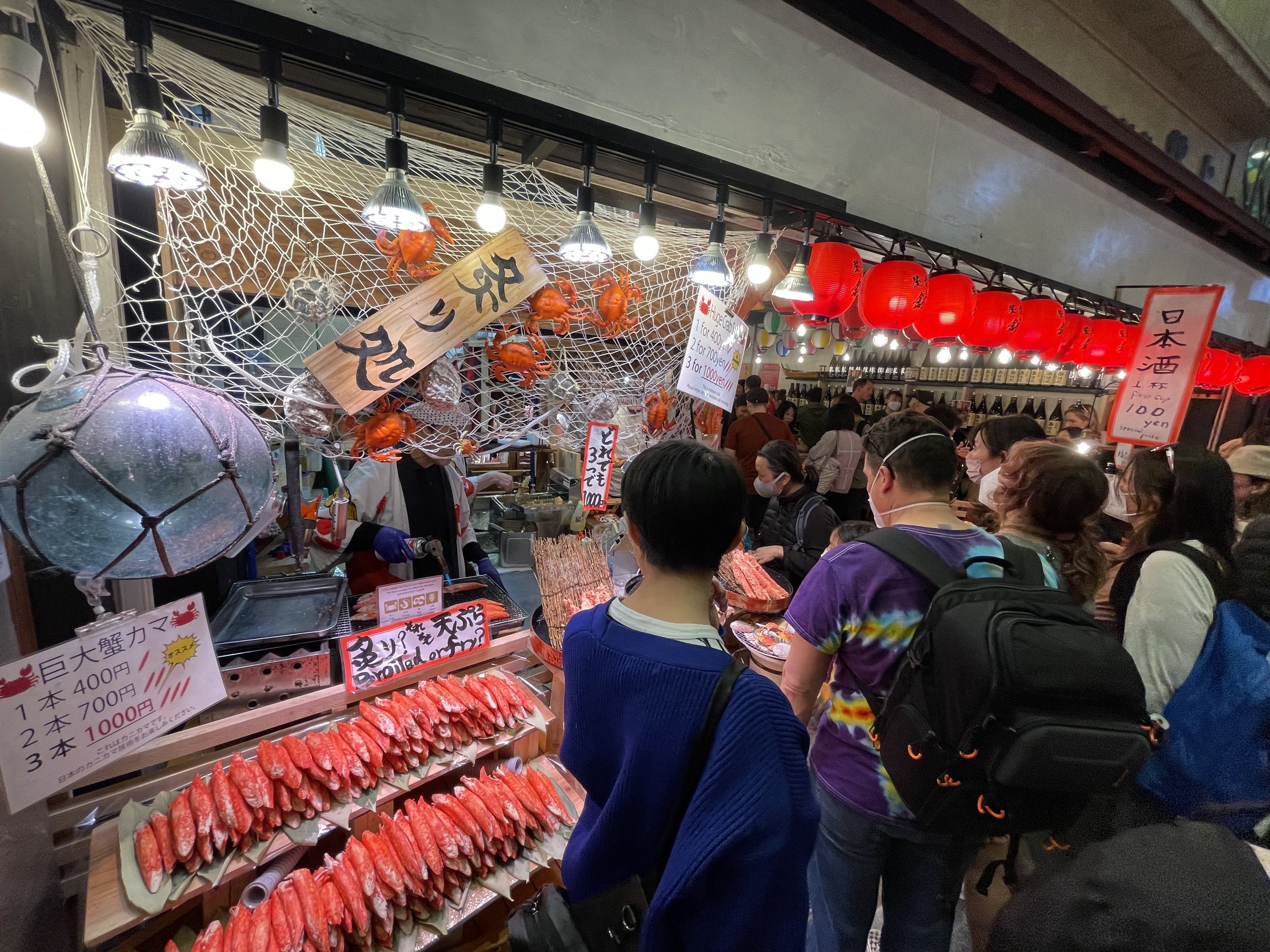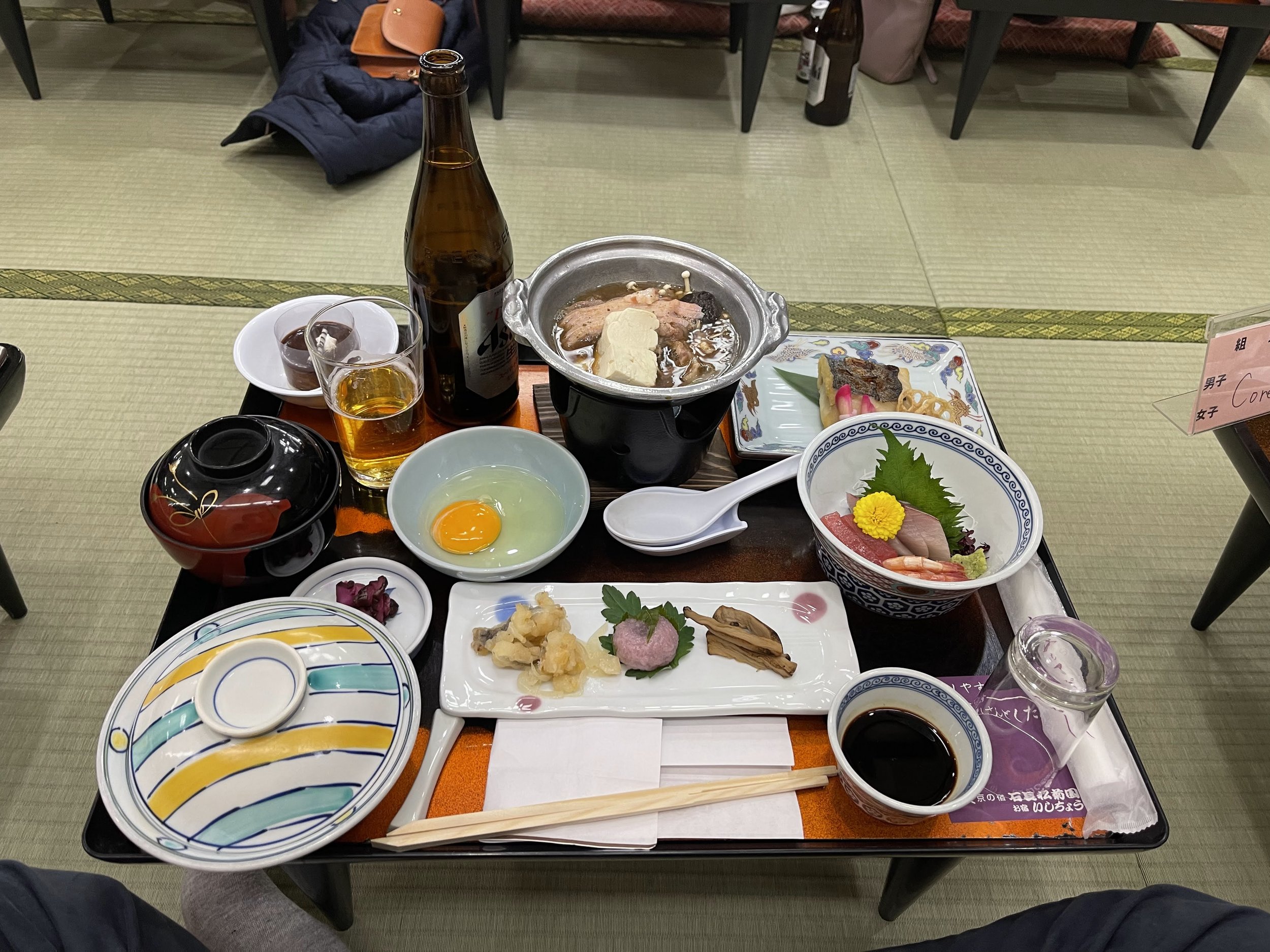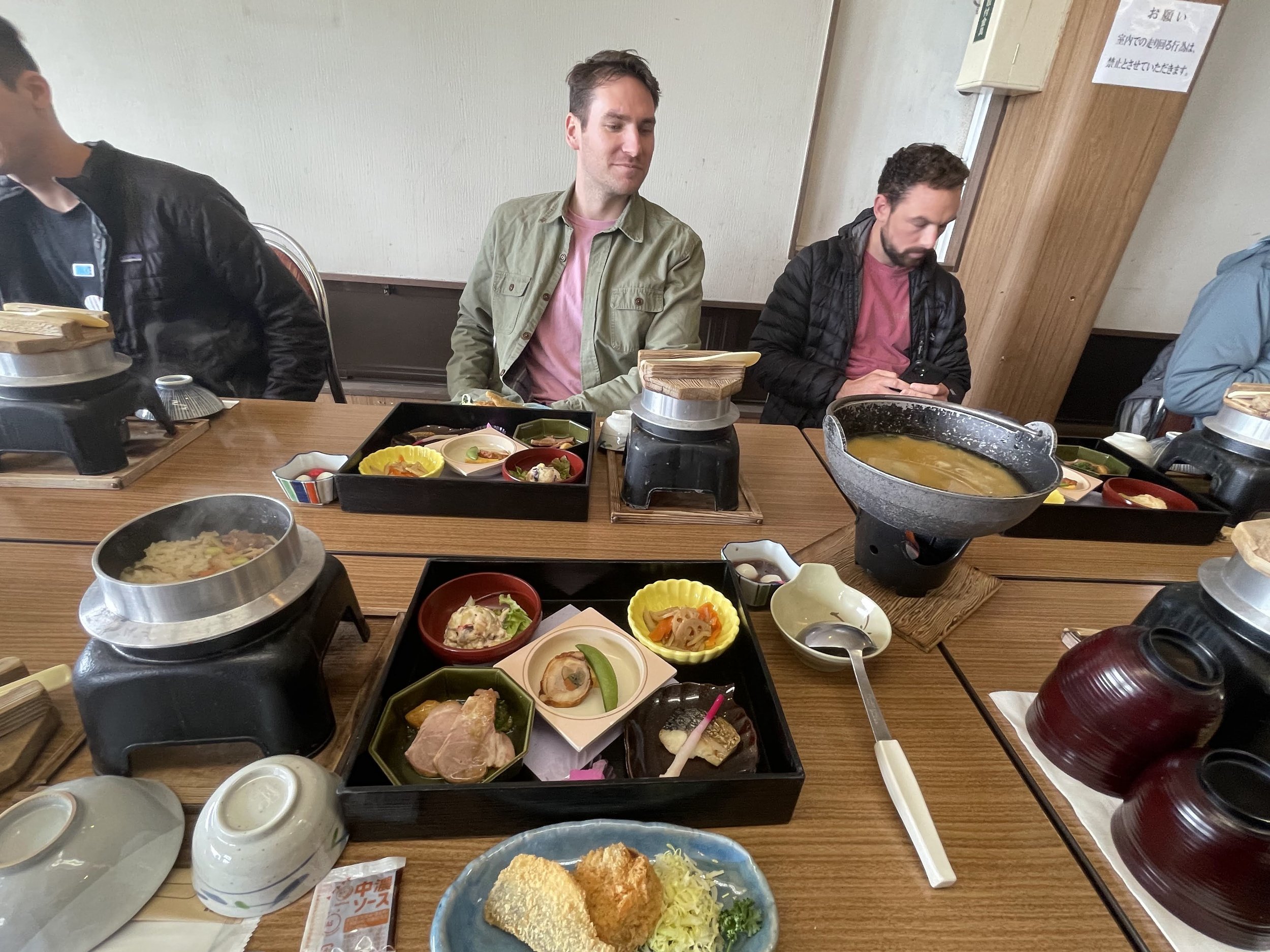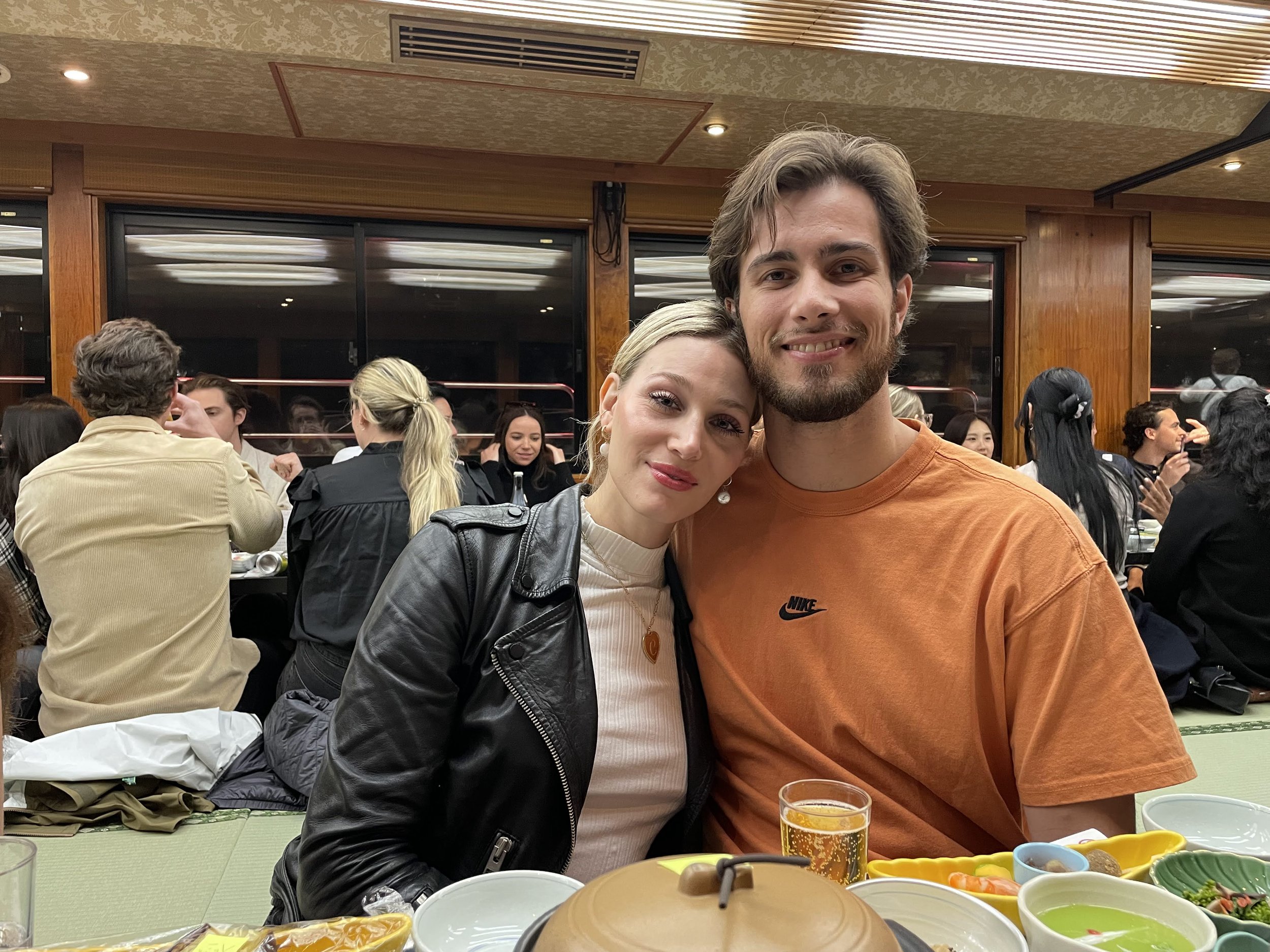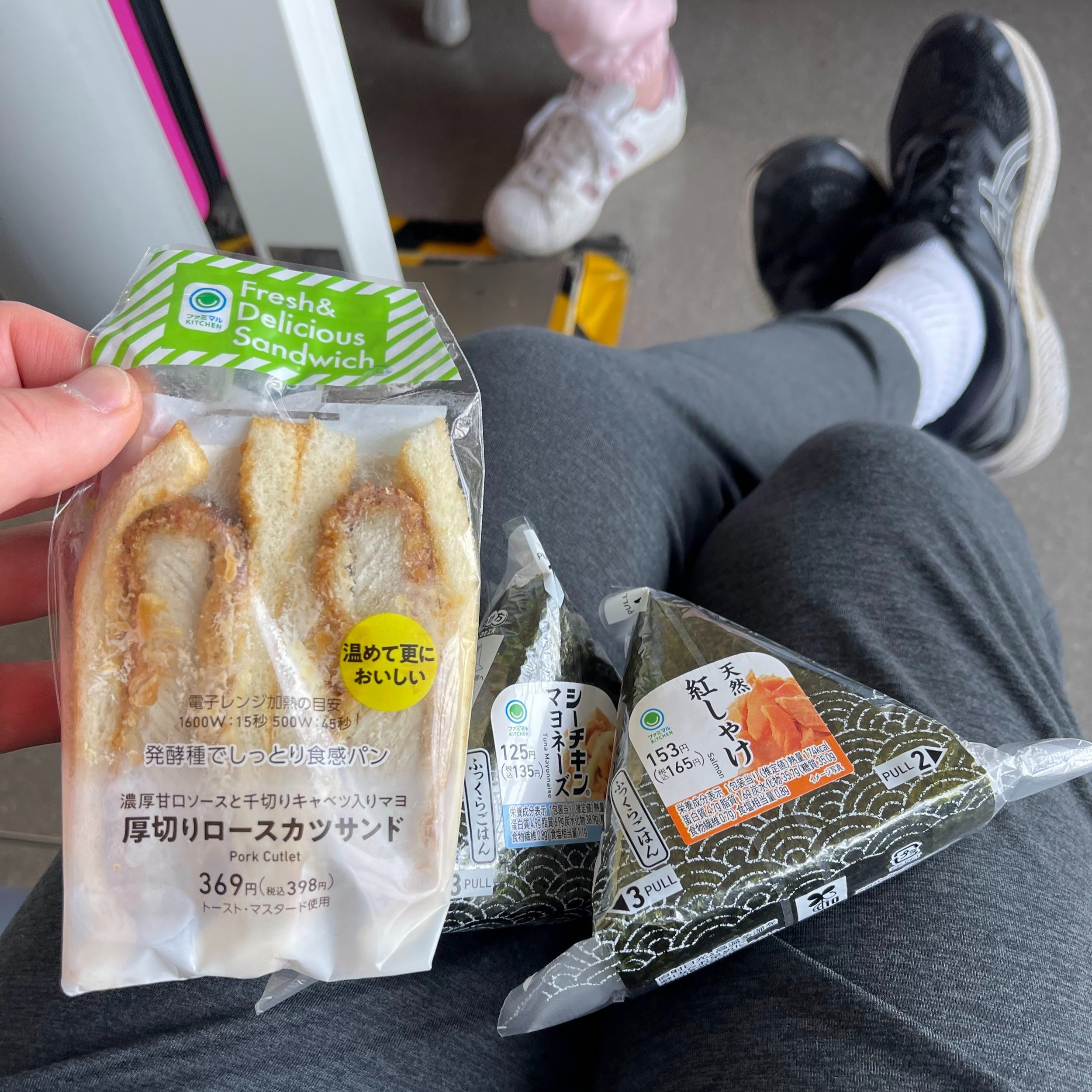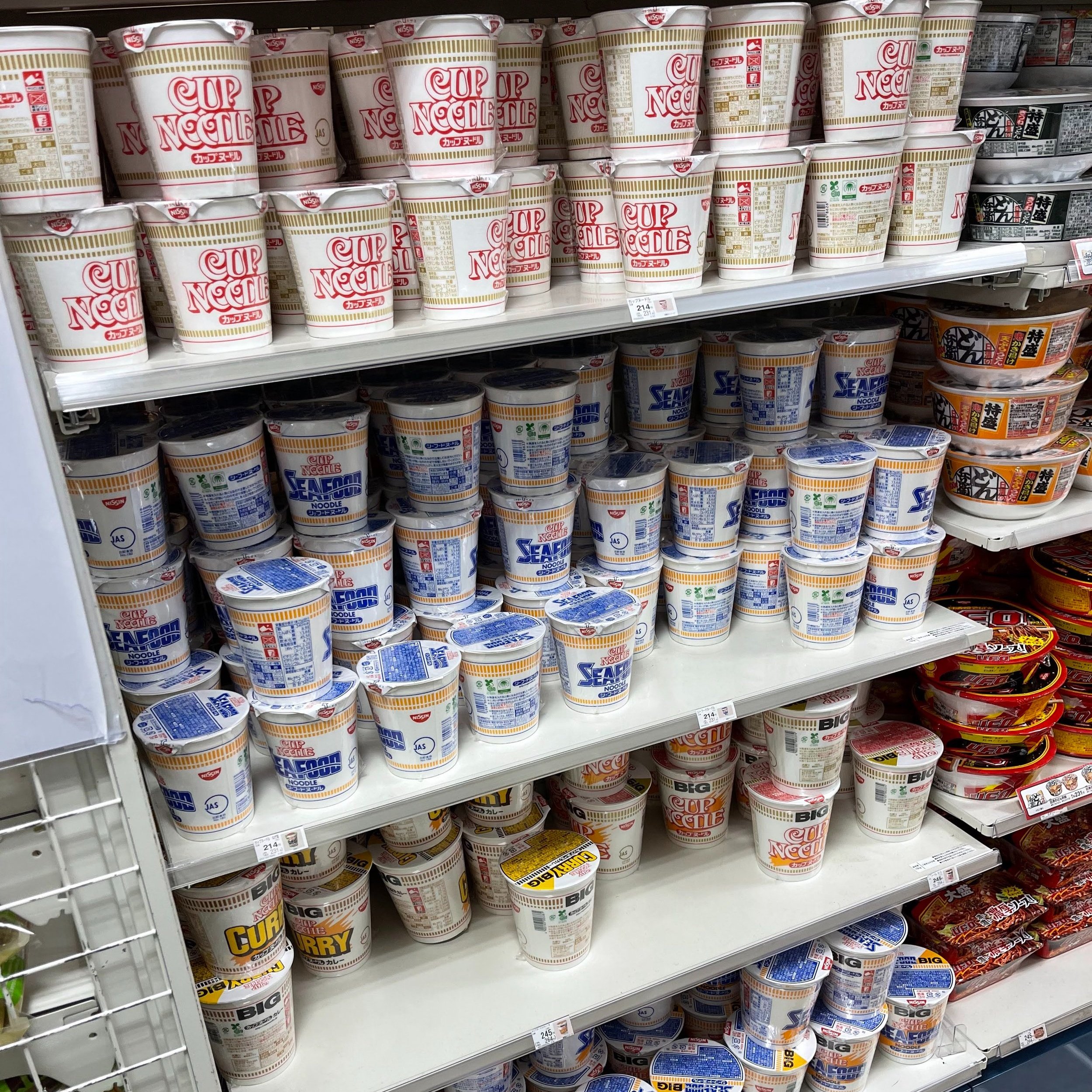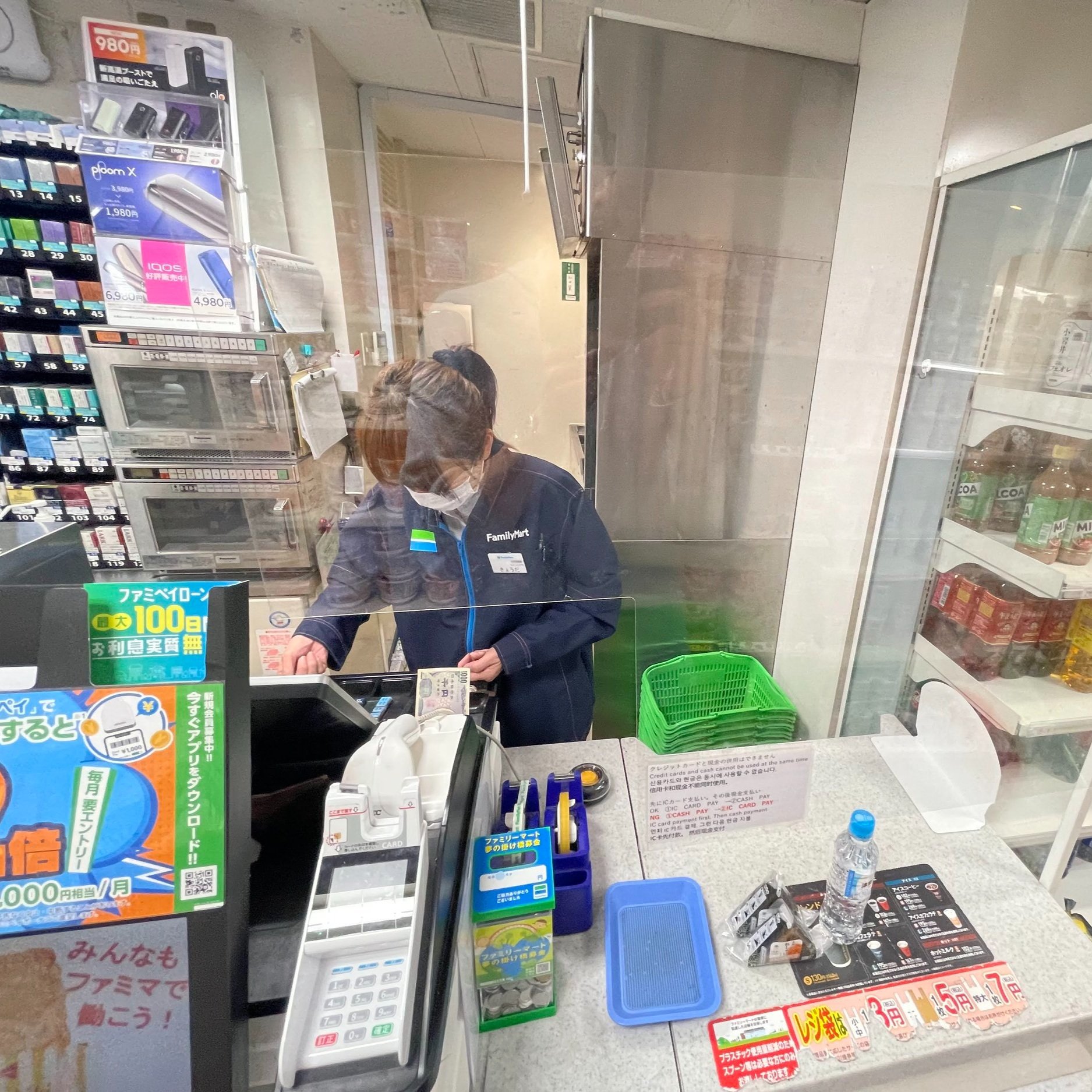Sushi, Soba, Sake
Please join as we eat and drink our way through Japan! Let me just first say that I didn’t treat our trip as a foodie would; plenty of my classmates found far better places than I did. They awed me with content featuring spreads of Waygu Beef from Kobe and experimental cocktails from L'Escamoteur. Instead, Corey & I had prioritized the wandering sort of exploring. Yet even without trying very hard, we found cheap, hearty food around every corner.
Take our first meal upon arrival, for instance. By the time we checked into our hotel, I’d been awake for 21 hours and hadn’t eaten since a small meal on the plane over 6 hours before — which is to say that, especially after scrambling through the Tokyo train system, we were starving. Our concierge recommended a restaurant in Shinbashi, so we walked there in the rain only to find a line out the door (or rather, down the stairs). So we pivoted to a soba place called Komorosoba that we’d passed along the way, and for just $6 USD each they brought out all of this:
We dug into the food like pig parents. In fact, Miyazaki has cited the atmosphere around Shinbashi as an inspiration for that scene’s eateries. Who knows, maybe he’s even been to this soba place!
Back at the hotel lounge, we reclined in more civilized fashion with a glass of Miyagikyo whiskey neat. It tasted both sweet & oaky, with a nice sting to it that — paired with my full belly — took the edge off such a hectic day.
The next morning, thanks to Corey’s Hilton Diamond status, we took the elevator to the top floor wherein we found an epic breakfast buffet. I stuffed myself with a potpourri of Western and Japanese mainstays. Never had I mixed sausage links with nozawana, bacon with white rice, or raw fish with pon parisien. I rounded out the meal with mushrooms, grilled fish, Japanese pickles, miso soup, and made-to-order seaweed scrambled eggs topped with sea urchin.
A few hours later, while strolling through the first park that crossed our path, we found long rows of food tents sporting such wares as kare pan, yakiniku, and ramen. Yet one vendor stood out from all the rest. When in LA, eat al pastor burritos from taco trucks that carve the meat right in front of your eyes. When in Tokyo, eat fish on a stick. After traveling over 5000 miles to get here, how could I not?
Hole-in-the-wall ramen spots appeared easily accessible — that is, until we tried to get into one, and ended up waiting in a three-part line stretching all the way down the street. While the Japanese patrons waited with utter composure, we got impatient after the line hadn’t moved in 10 minutes and left. Luckily we soon stumbled upon Menya 33 and found seats at their counter as songs like “Smile” by Nana Morí played over the speaker. After a quick struggle through the menu, mercifully aided by an English-proficient patron, we settled in to enjoy front-row seats to the cooks making my soup.
I say my soup because their broth contained pork, so Corey couldn’t have any. For her we stopped at an udon place, at which I couldn’t resist another bowl, this time with beef. And some deep fried tofu sushi.
Subsequently, I fell into one of those small post-feast depressions, where the body — overwhelmed as it is by digesting — neglects to send energy to the brain. At least that’s my understanding of it. It didn’t help that, it still being our first full day in Japan, we felt tired and a tad overwhelmed. Nothing a short nap and a bit of Ichiro’s whiskey via room service couldn’t fix.
For our second Conrad breakfast buffet, I made a few slight adjustments. Still somewhat full from all of the prior day’s noodles, I started with salad & a smoothie. Yet that ultimately only warmed me up to hit the full buffet again. Besides, how could I pass up this lobster omelet?
Walking down Takeshita Street that afternoon, we stopped for a couple of nibbles, starting with 7/11. 7/11s hold a peculiar particular place in Japanese city life. They have pretty much anything you could want, from booze and hangover pills to grilled squid and octopus dumplings, and at high quality too. I tried to get a pork bao but the cashier misunderstood me and gave me a pizza bao. Pretty good though.
We stopped next at Strawberry Fetish for their signature candied dish, which looked so soft that its crunchiness surprised me. We did not stop at Santa Monica crepes for anything more than a picture, which, I couldn’t resist because even living so close to Santa Monica I’d never think of it as being known for its crepes.
A bit past 2pm, we figured we’d been in Tokyo long enough without having had sushi. So we headed for the closest place we could find, Misakiko, which was a short flight of stairs down from street level.
We sat in a standard booth next to one of the two conveyor belts. Shortly after placing our orders by touchscreen, a train would rush out carrying our food. I began with Chawanmushi, an egg custard containing clams & shrimp. Then came the sushi, of which I got every variety I could stomach.
First the seasonal selections: sakura sea bream, flame-seared salmon “tokishirazu,” jumbo steamed scallops, seared bonito, and sweet shrimp gunkanmaki rolls. Next the hand rolls: tuna & pickled radish, raw sea urchin gunkan maki, conger eel & cucumber, and squid marinated in soy-based sauce.
The squid had a grainy & gummy texture, like liver but more resilient. So resilient, in fact, that when I tried to bite just half the roll, the whole piece of squid came off into my mouth.
The sea urchin had to be my favorite. Its fresh, unique taste exploded in my mouth. Quite a bit more fitting on rice than on eggs, I must say.
After an evening exploration of Shibuya, we walked to a cocktail bar that Corey had found called the Bellwood, which gave off a retro-western vibe to me, yet apparently is based on old-school Japanese coffee houses.
Being unable to resist bourbon, I began with the Timeless Fashioned, mixed liberally with cacao nibs. I wasn’t quite in the mood for dessert though, so (after finishing the Timeless) I asked our English-fluent server for a less-sweet option, and he proffered the Bamboo+, an eastern twist on the classic drink incorporating hints of hoji tea. Just two sips in I ordered another.
Food-wise, while we didn’t have the pleasure of sampling their experimental menu in the back room, I did enjoy the delectable “Taco” Yaki, literally octopus meatballs filled with cheese, or perhaps you could say taco flavoring with Japanese yaki presentation. Eaten with chopsticks, of course.
The following night, our fourth in Tokyo, a classmate of mine, Che-yuan Li, who’d worked in Japan for a couple of years, took a small group of us out for an izakaya tour. We took the metro to a neighborhood between the Rainbow Bridge and Tokyo Tower and it was clear — perhaps from the fact that our group included the only white people in the restaurant — that Beniya (炉端人 べにや) was worlds away from more mainstream dining options. Case in point: they served crunchy cartilage (nankotsu).
We got a lot of food and I regret to say I don’t remember quite what, outside of the yaki onigiri (grilled rice balls) and the tsukune (minced chicken balls). I do have a picture of the menu though, and if I were to go back and order for myself, I’d have to get: seseri (chicken neck meat), bonjiri (rich chicken tails), hatsu (chicken hearts), takono kara-age (deep fried octopus), ikano-shiokara (japanese salted squids), and, for good measure, some sunagi mo ponzu (chicken gizzards). Pick basically any part of a chicken and you could have gotten it, à la carte.
Much of our fellow clientele cycled through, save for a large table of businessmen getting uproariously drunk, at least for a Monday night. I’m sure they took plenty of hangover pills.
The second leg of the tour took us to an alley across the street from the Shinbashi train station in which we found a brightly-colored storefront. Inside, it felt as if we were underground — perfect place to cut the eats and focus on drinking shōchū. We called it a night around midnight, just in time before the Tokyo metro closed.
Corey had had udon and soba, but not ramen, multiple attempts having been thwarted by pork broth. So you can imagine her excitement when, in Ueno Station, she found one just a few minutes away according to Google Maps.
In fact, it appeared to be somewhere inside the station. We tried walking toward it, but kept meeting dead ends, and I couldn’t imagine a way over there until I remembered our first night in Tokyo when we could only reach our hotel entrance by skybridge.
We walked outside and up to another skybridge and soon reached the station’s upper level. We got excited, thinking this must be it, until we hit another dead end: the turnstiles. However, there appeared to be plenty of food options on the other side, so we scanned our Suica cards and walked in and soon enough we’d found it, T’s TanTan, fully vegan and fully glorious. Corey had found her happy place.
The next meal I’ll describe shares a particular quality with the prior, namely, that it’s only available to paying train customers. Of all my meals in Japan, this one might have satisfied me most, precisely because I expected it least.
We were on the bullet train, and given its 2-hour duration, I didn’t expect any food service at all. Yet despite the large breakfast I’d eaten, I perked up when a lady pushed a cart toward us and eagerly inspected its wares, my eyes quickly drawn to a rice ball bento box. It was too intriguing to pass up. On an American train, there’s no way I would have gone for such an option. Yet here…
When I picked it up, it felt much heavier than I’d expected. Inside lay a delight: two massive rice balls, (fresh) grilled fish, sausage, a meatball, egg, and pickled vegetables. Few meals in my life have so precisely hit the spot. Like the soba at the beginning of this article, it cost about 6 bucks.
Corey didn’t eat much on the train, so outside the first temple we visited that afternoon in Kyoto she got some baked rice cakes. I got hungry on our way down from the second temple, but didn’t have time to indulge in a fragrant fried chicken dish I’d seen on the way up. That made me all the more hungry for our dinner that night at Komefuku. After wasting little time in guzzling down a Kyoto beer, I got not only fried chicken but also beef and fish, finishing off every last bite. A little heavy on the stomach, sure, but I was to need every bit of energy I could get given our coming night out at a nightclub.
The morning after, our traditional ryokan hotel (which I’d actively chosen over the western hotel that the other half of our group had gone with) served a traditional-style breakfast. I downed the eggs & salmon quickly enough, but when it came to the veggies… 🤢
Ok, I didn’t actually throw up. But I must admit I was raunchily hungover from the night before and thus am somewhat to blame for this being the only time throughout the trip that I actually felt grossed out by food. On the other hand though, it’s breakfast! I don’t need cold, clammy greens thrust in my face.
Breakfast is served
While the greens didn’t help my hangover, the caffeine I ingested during a traditional tea ceremony sure did. The ceremony came before the tea, commencing when a Buddhist monk strode in and began chanting and bowing before rhythmically beating a block with a stick. My mind flashed back to the night before and I thought this monk might make a fine DJ.
After being ground and ladled, a woman in white served us very bitter tea. Its harsh flavor actually made it all the more enjoyable, so far was it from the insipid green tea you might find in an American supermarket.
We lunched overlooking the river, the culinary highlight of which was rice mixed with soy sauce, edamame, and sesame seeds. More importantly, however, they served sake at a very fair price, and Kush & I got a couple of glasses to water down our hangovers. It did just that — water them down — meaning it made us feel more sober than before.
Thank Buddha for afternoon sake
That night we ate a dinner of keema curry pies and afterwards walked three flights up an outdoor metal staircase to an otherwise-unmarked door. We opened it to a smoke-filled room, empty save for the source of that smoke, an androgynous bartender. Rather than offer the anime-inspired menu that Omer had remembered from a prior visit, our bartender shrugged as if to say “yeah we have drinks but I’m not gonna help you figure out which.” I kept it simple with a whiskey highball. If not an anime menu, they at least had anime music such as “A Cruel Angel’s Thesis.”
I didn’t get to have any waygu beef steak throughout the trip, thus I couldn’t resist an opportunity to at least try waygu beef croquettes from one of the many street vendors along our walk from Arashiyama’s monkey park to its bamboo forest. Unfortunately, having just polished off udon with fried fish, these croquettes put me over the top and sent me into another post-prandial lull.
Passersby perhaps searching for street food of their own
I soon had more cause to regret my indulgence in the croquettes when we took the train downtown to explore Nishiki Market, a culinary cornucopia filled with people bouncing from stall to stall to fawn over its endless variety.
Beef skewers grilled on-demand. A woman torching squid on a stick. A massive tower of shrimp. Pick-your-own crab to be broiled or fried. Fresh shellfish for the choosing. It went on and on.
But besides the so-so deep-fried beef rolls I’d eaten in Arashiyama, I had a big meal coming up that night and thus limited myself to a scoop of matcha ice cream. It tasted like… tea, a sweeter version of the bitter tea we’d sipped at the Buddhist ceremony.
Our big meal that night — capping off the trip — featured a full kaiseki spread. In fact, it was our third time eating kaiseki, the first being our lunch in Hakone and the second being our yakatabune boat cruise. I ate every morsel both in Hakone and on the river boat, but for that final enkai dinner I focused more on the drinking, namely, countless cups of sake with some beer thrown in for good measure. I do remember enjoying the hot meat dishes we each cooked individually, simmering over fire at our small chabudai tables. Many of the cold dishes were beyond my ability to identify, but they sure looked & tasted unique.
In the Osaka airport on our way home, we stopped at the terminal’s Starbucks for coffee and a hot dog — or rather, an extra-large pig-in-a-blanket. I thought it funny that this may indeed be how Japan sees Americans, as getting pigs-in-a-blanket during their morning coffee run. After trying it, however, I must say that they might be onto something. What do you say, @starbucks_usa?
Throughout the rest of the airport people ate more archetypally-Asian fare, such as cups of noodles. You’d buy them dry in the convenience store before filling them up at the hot water dispenser, conveniently placed next to the cold water dispenser. After my hot dog, though, I wasn’t yet too hungry, so I got onigiri and a pork sandwich that I could take onto the plane.
I have to admit, I got pretty hungry writing all of this. It’ll be way more expensive here than it was there, but BRB — I’ve gotta go put in a massive order of sushi and udon and pork buns and ramen and…
Thank you for reading! In the next post, I’ll go deeper into a few of our more immersive experiences, such as an art museum, a variety show, and, yes, another temple or two.
All pictures and videos in this post were captured either by Corey or myself.


